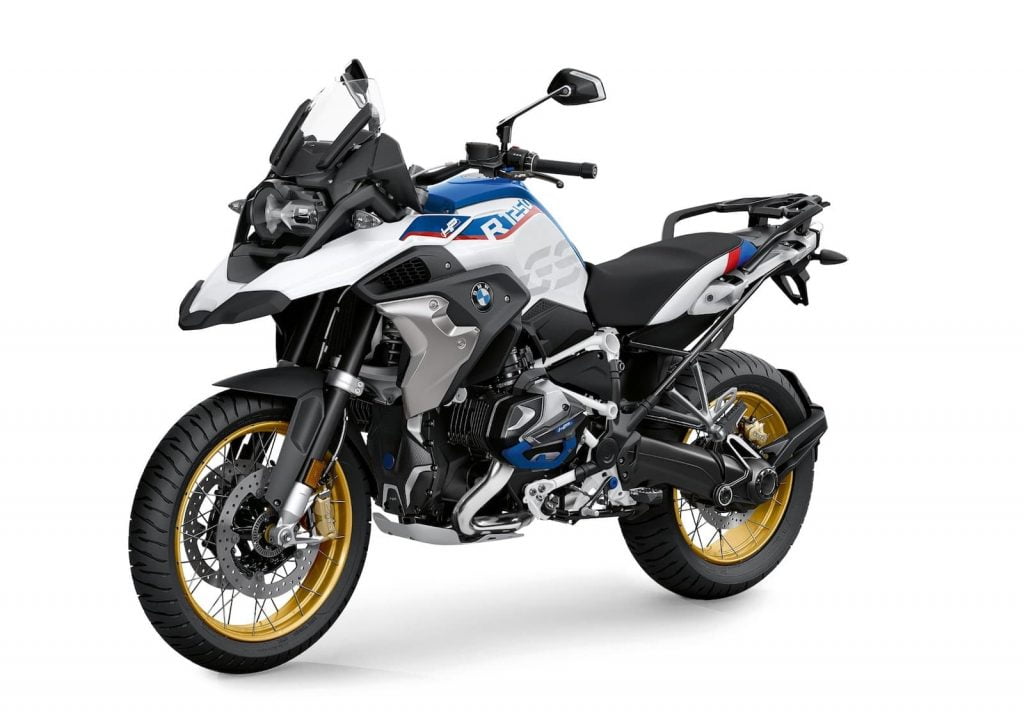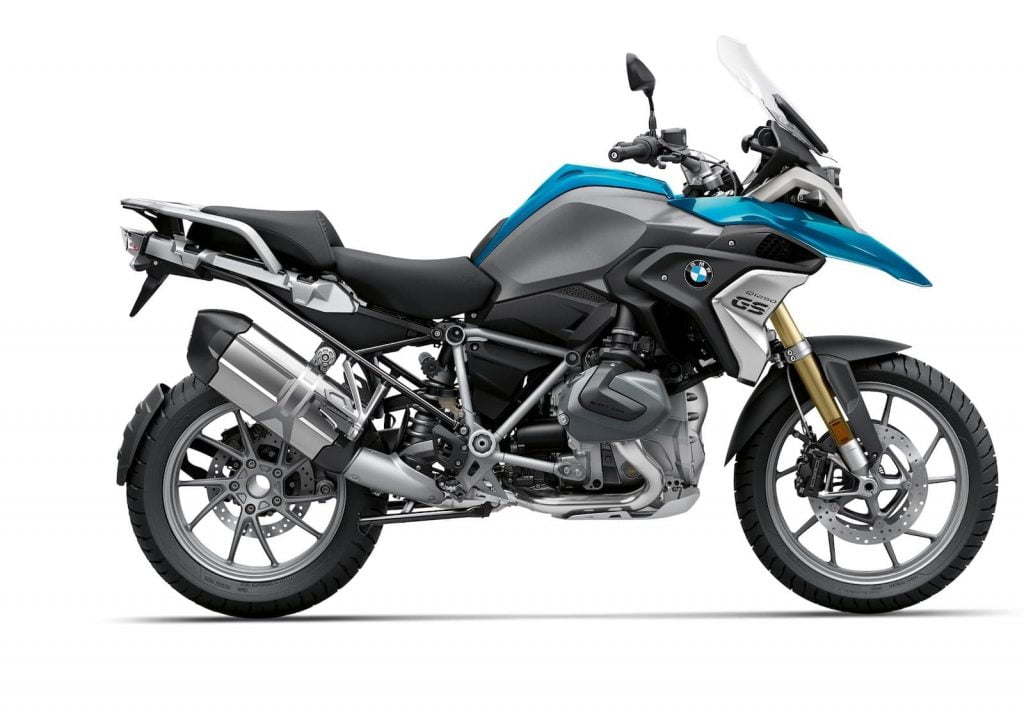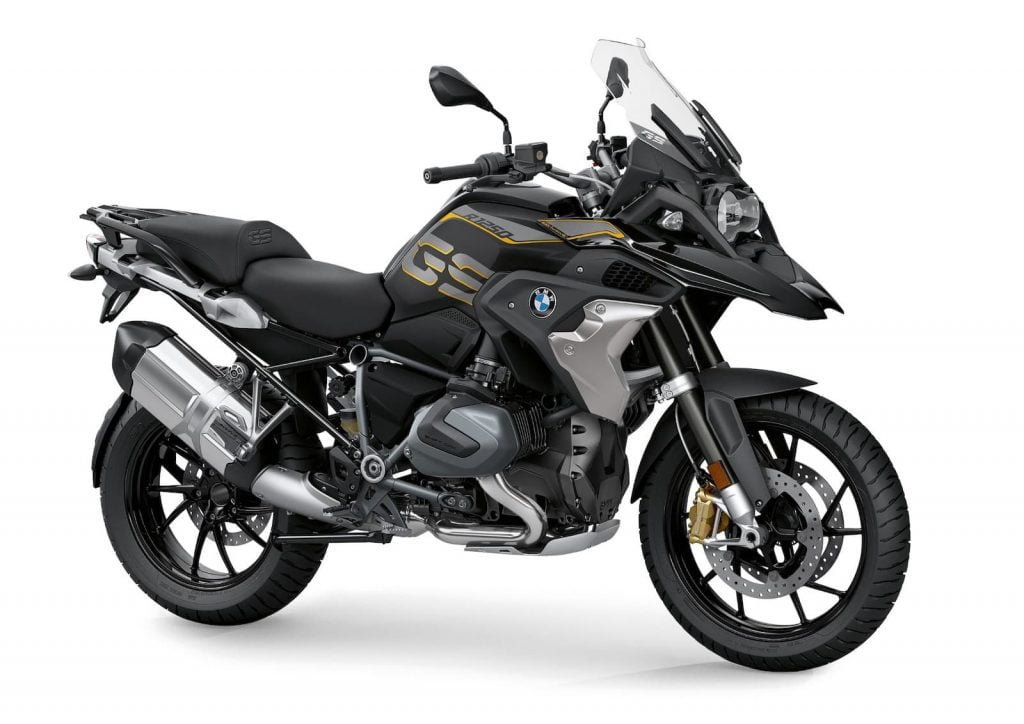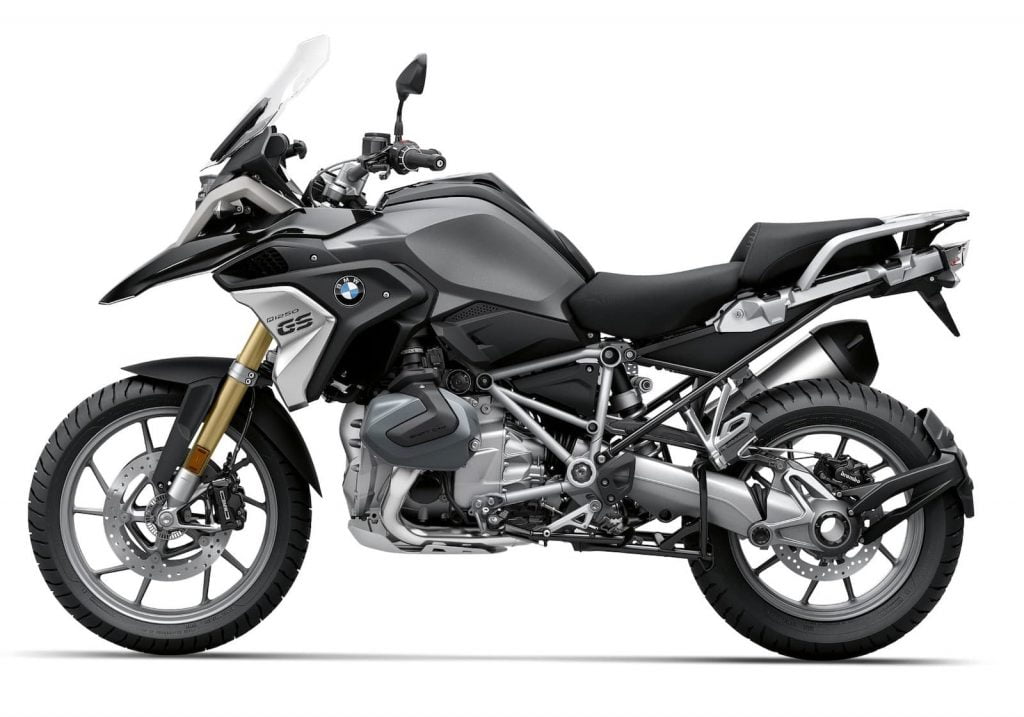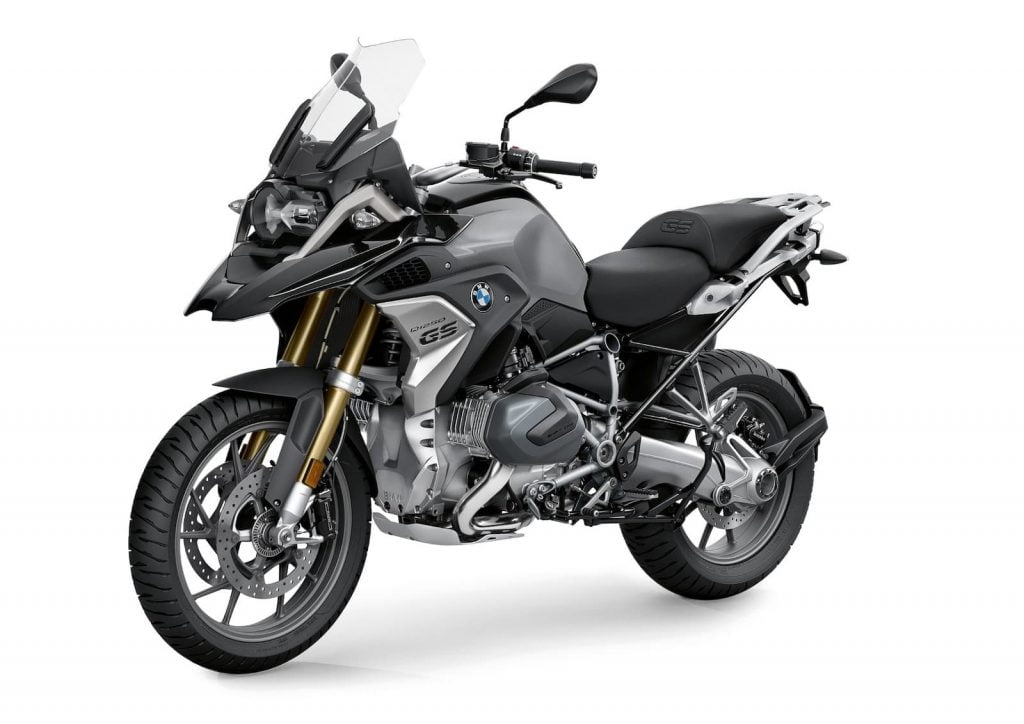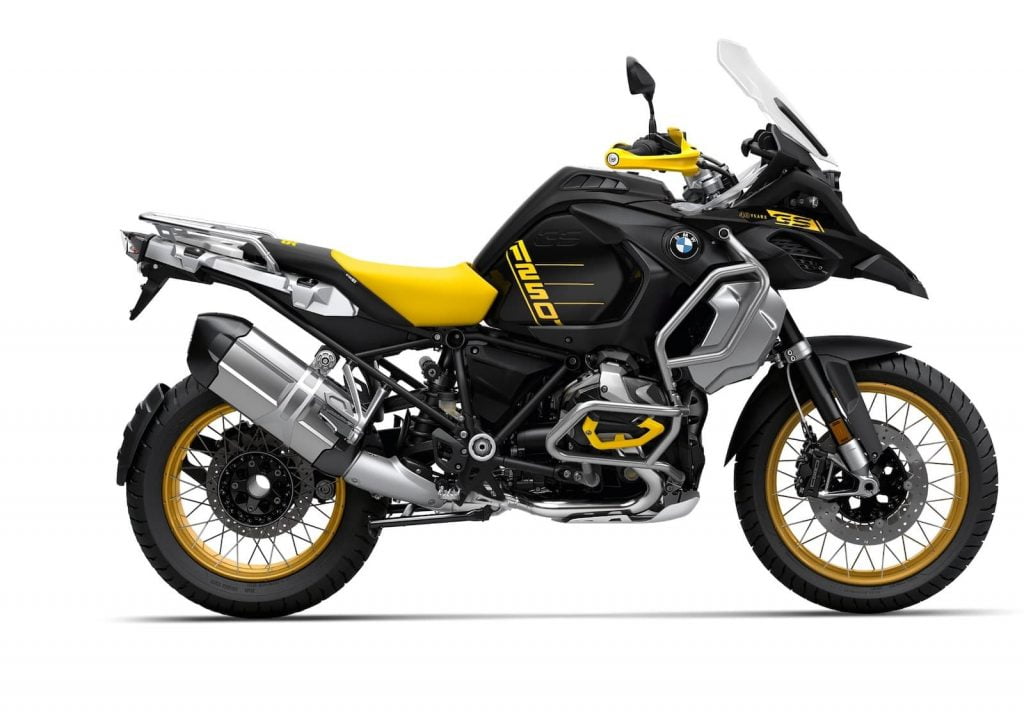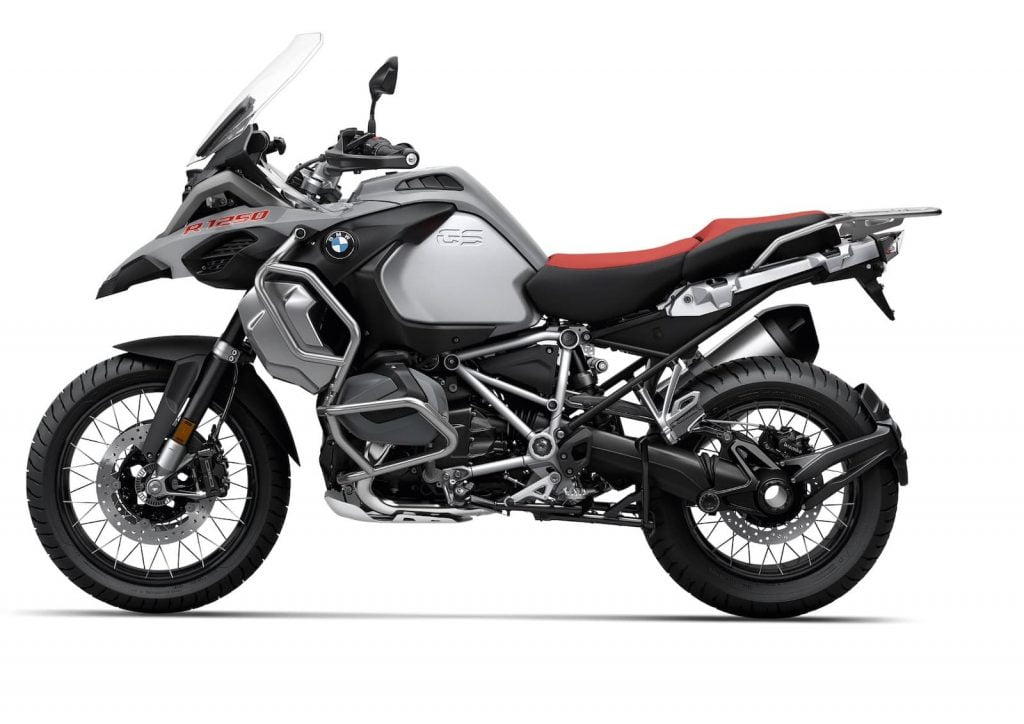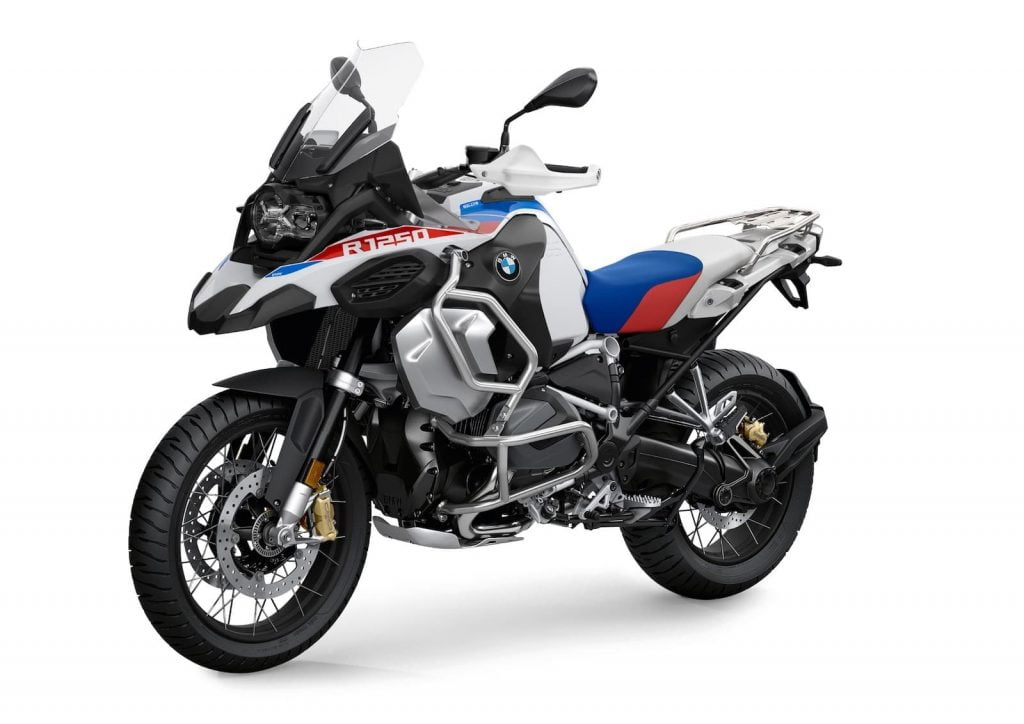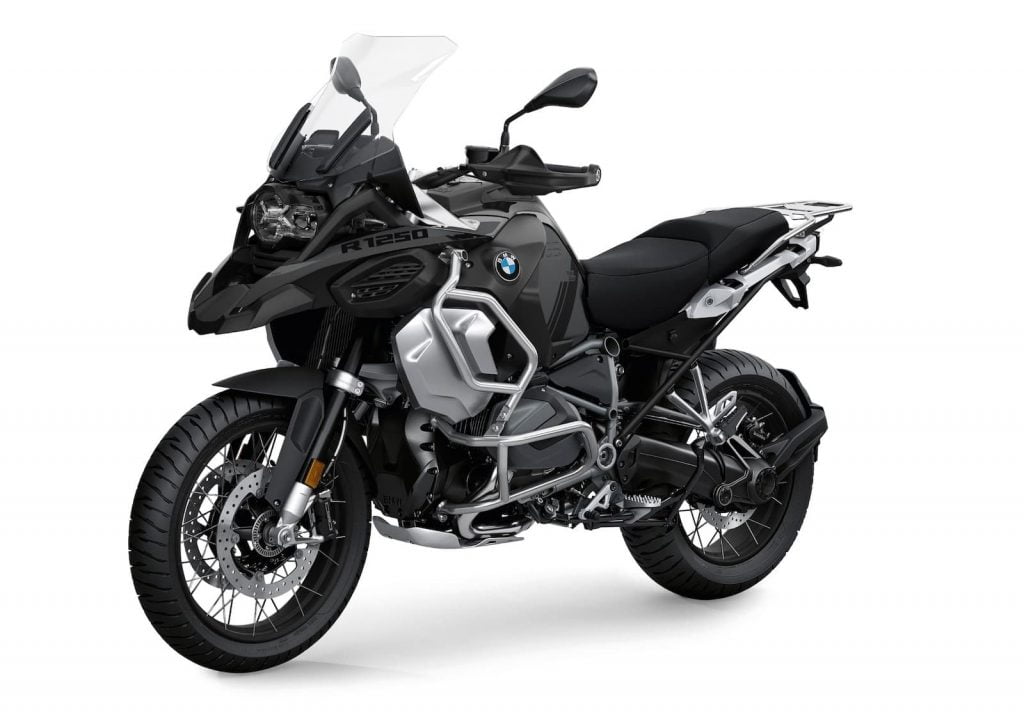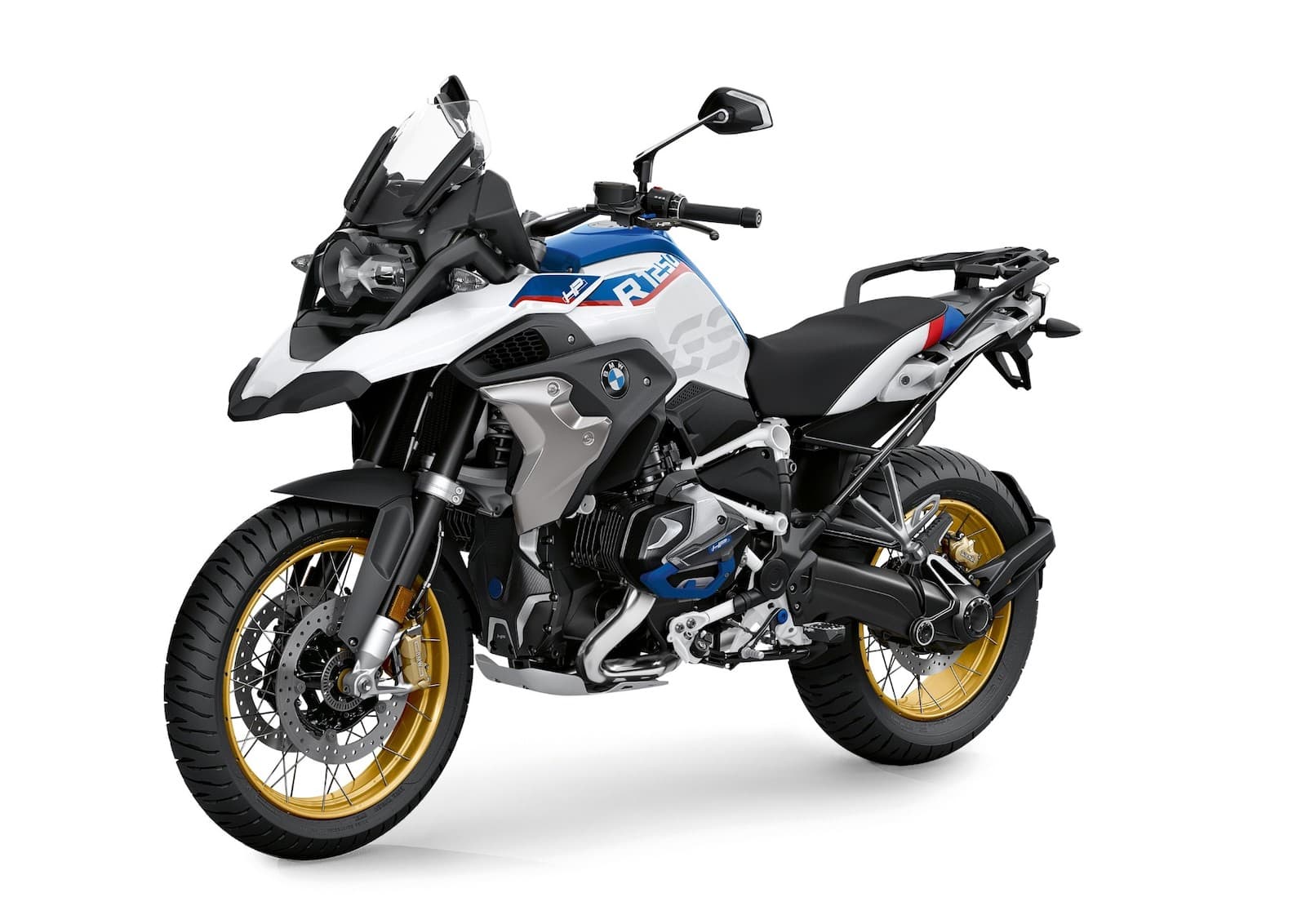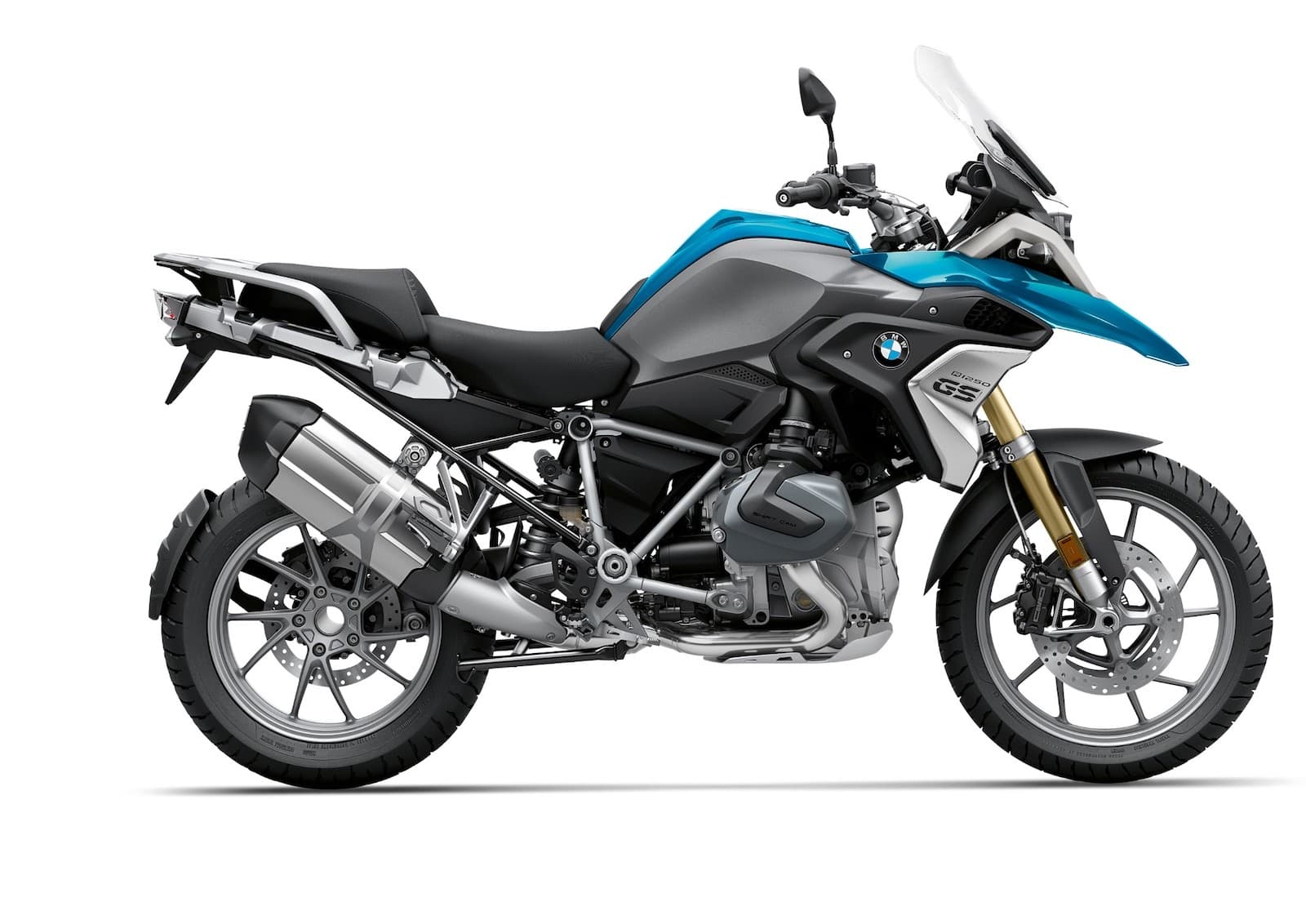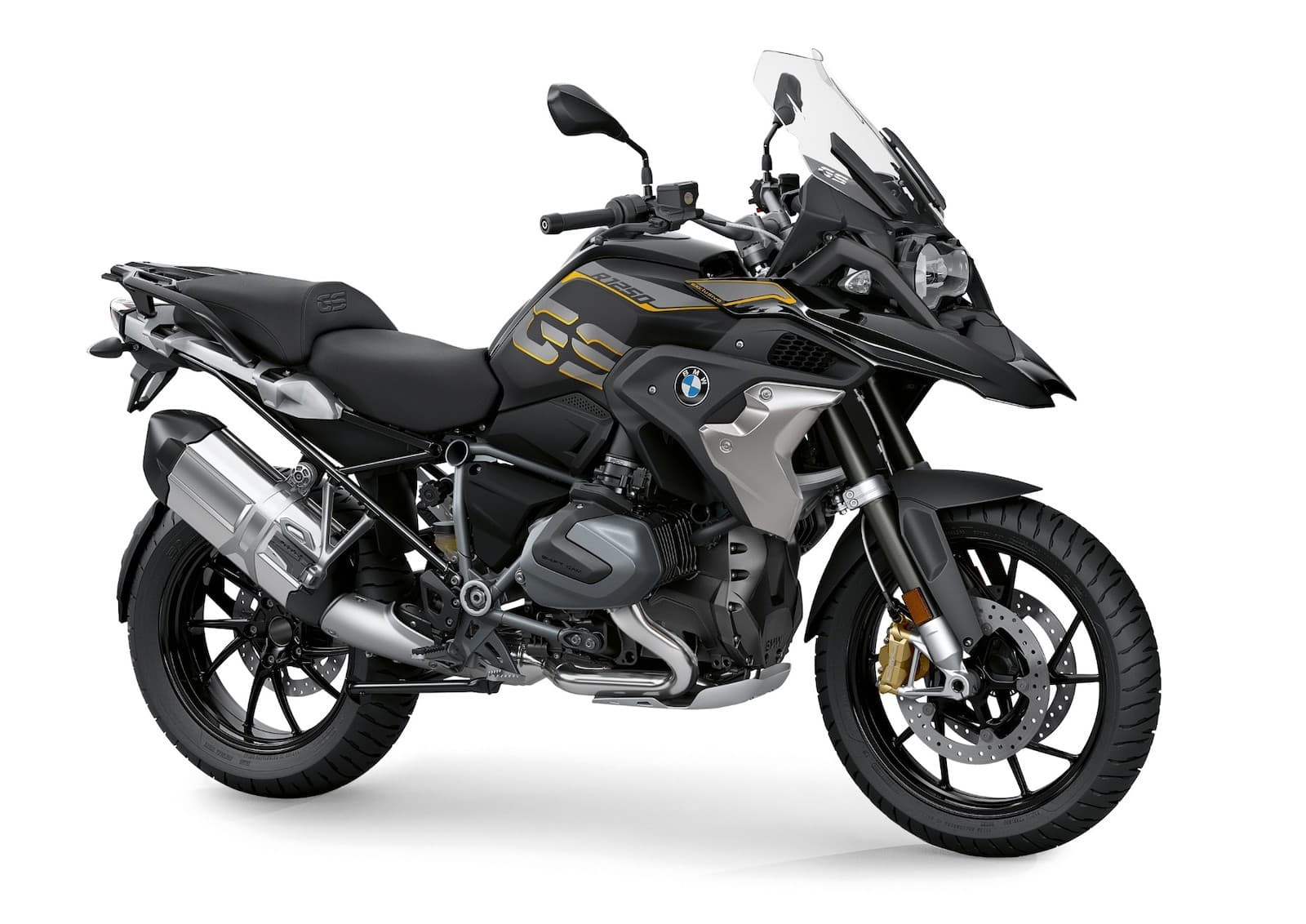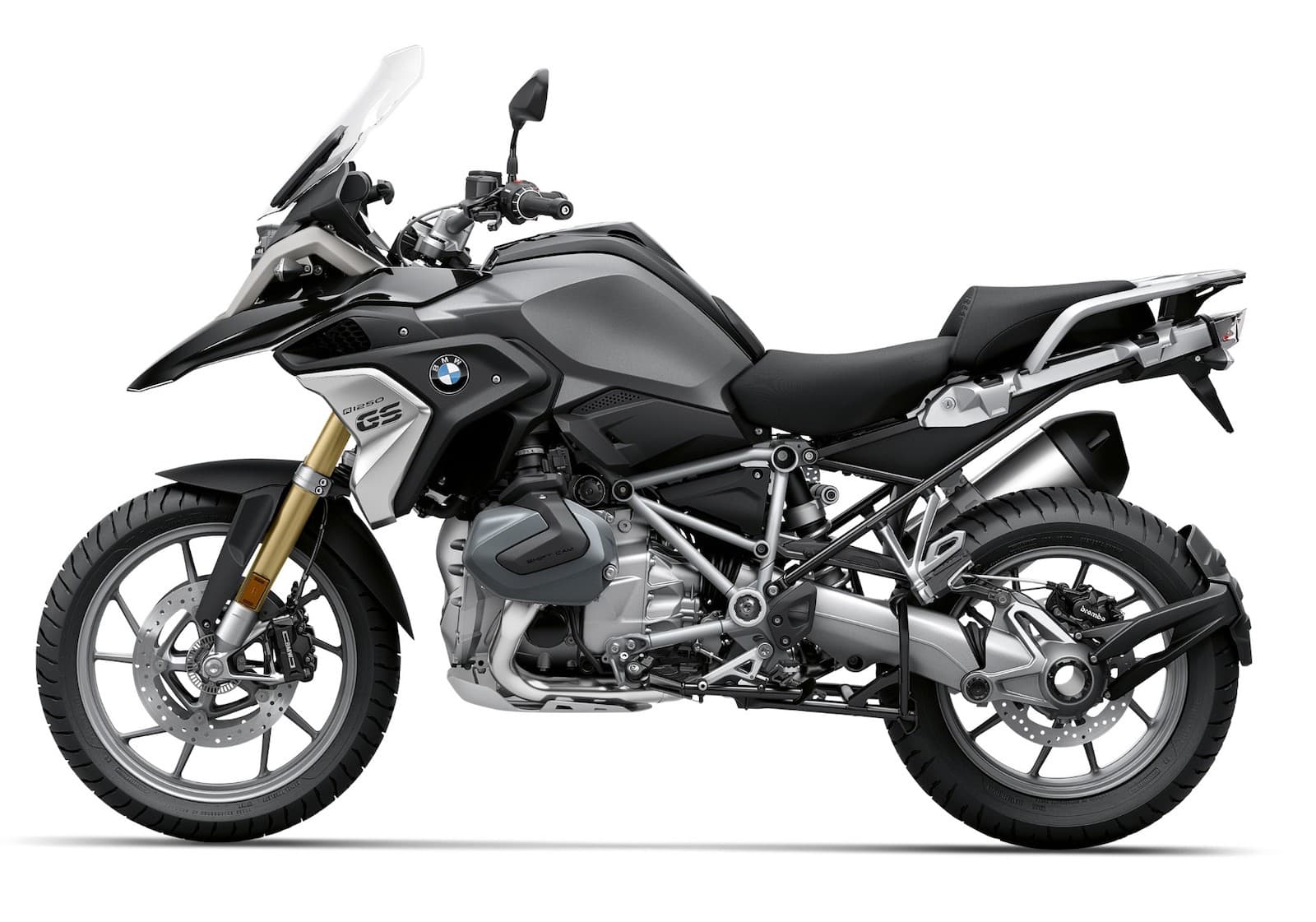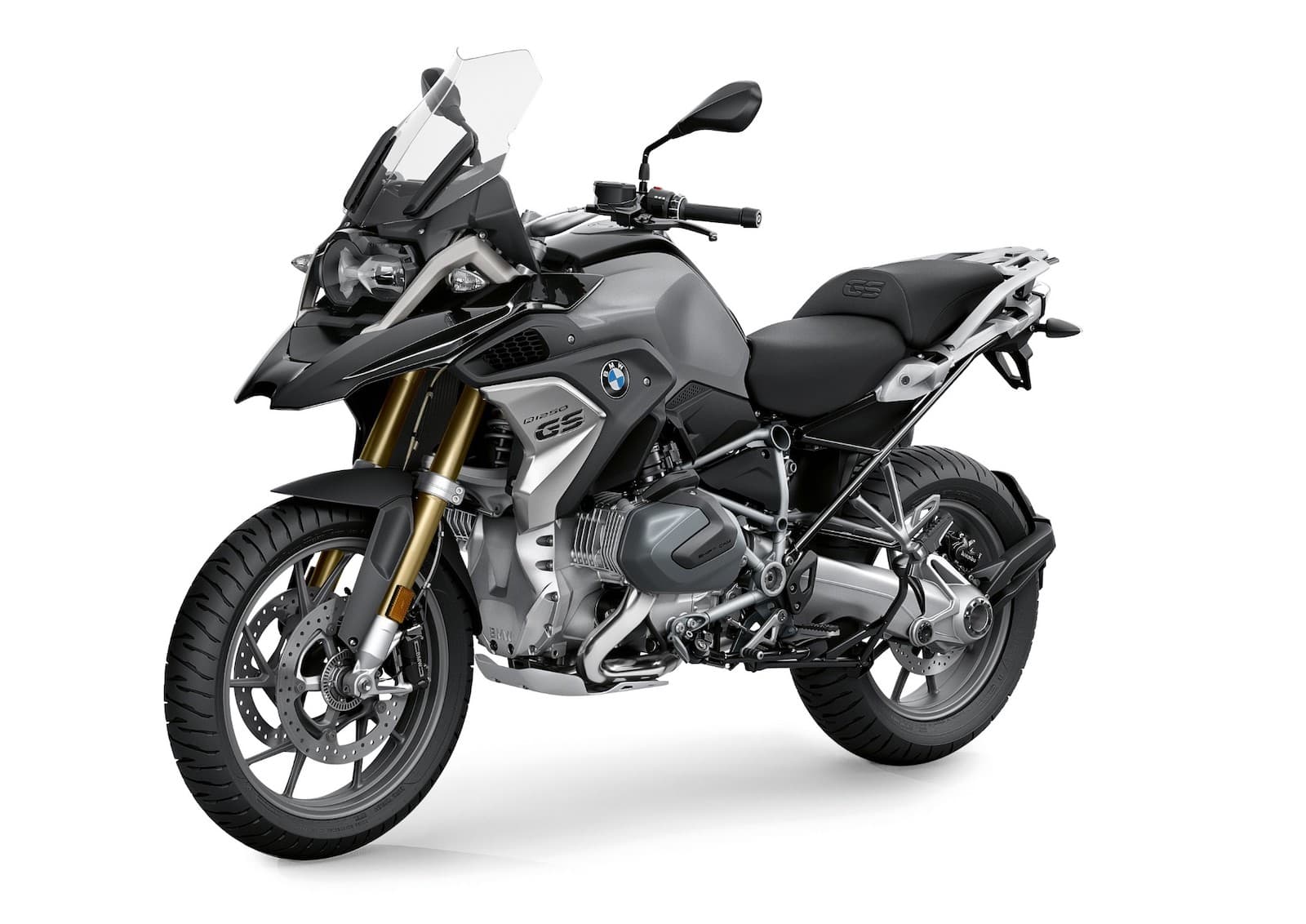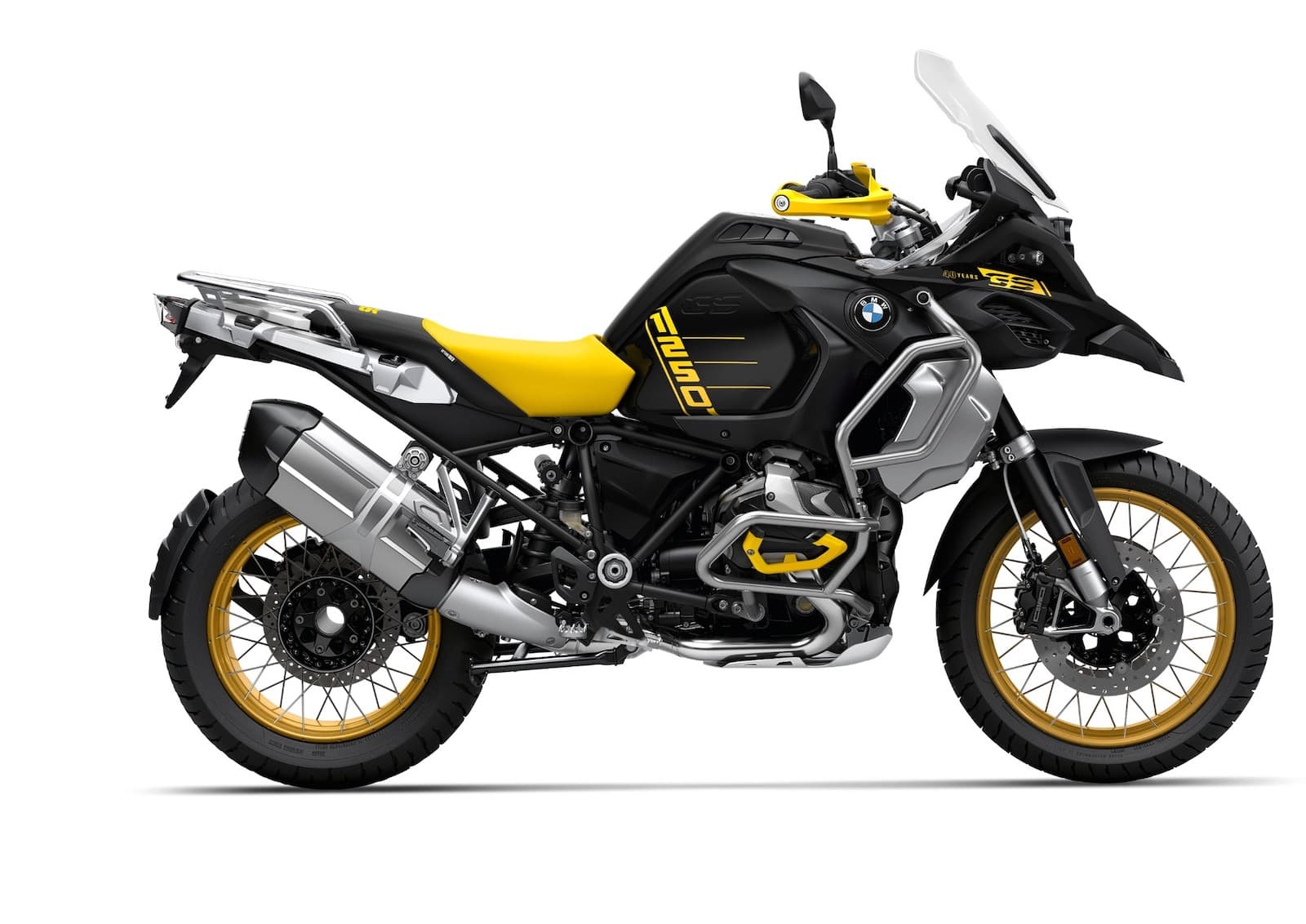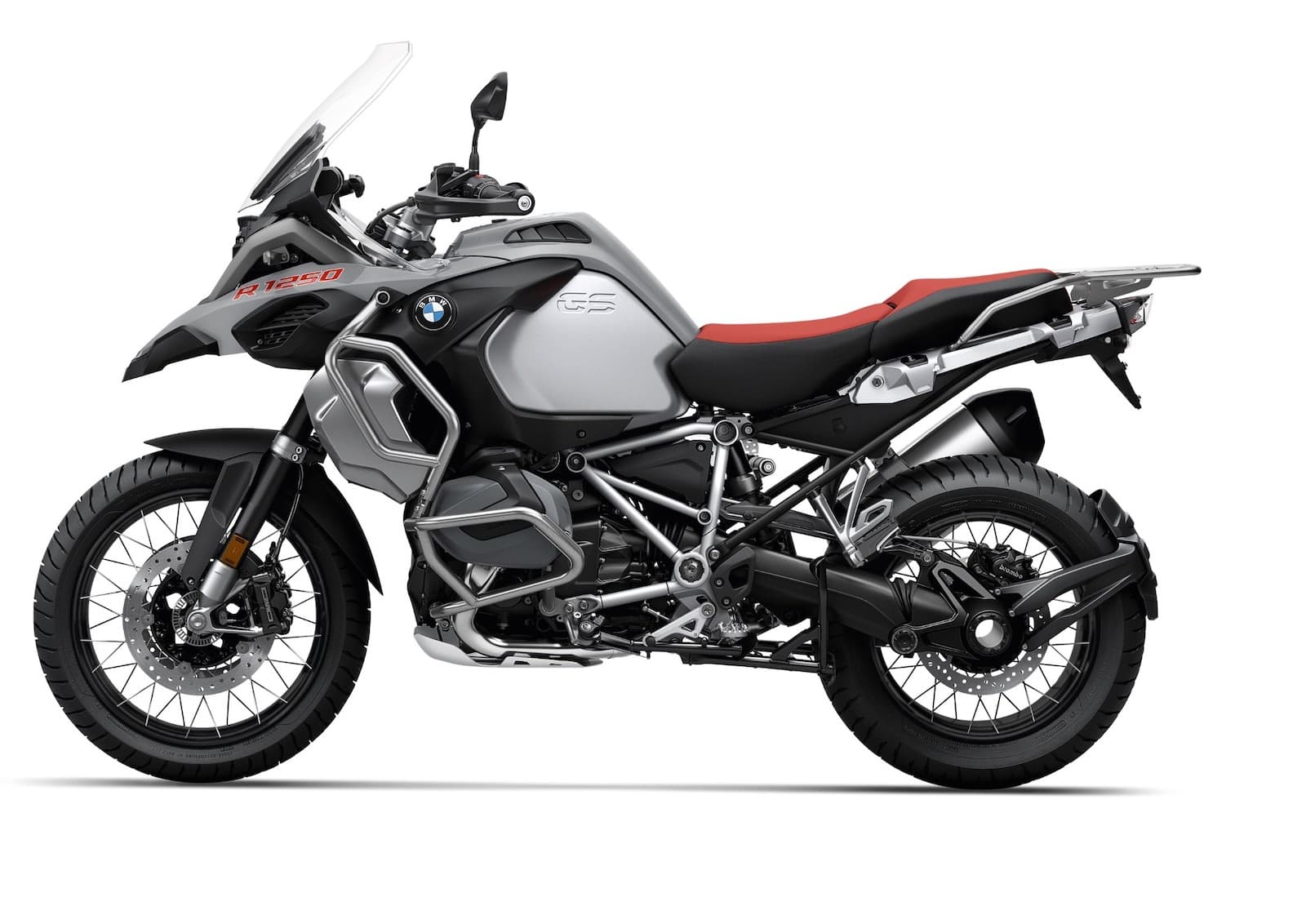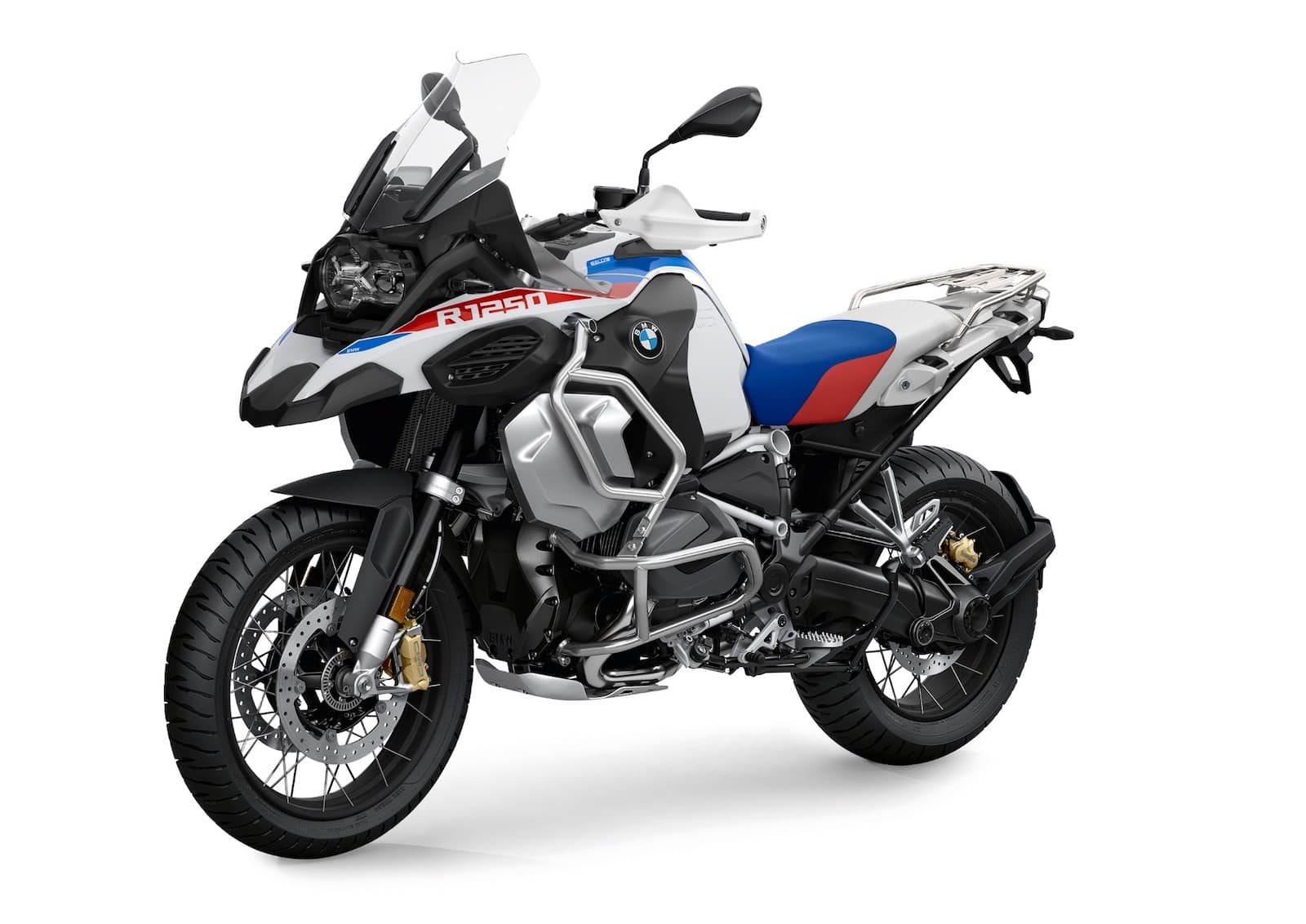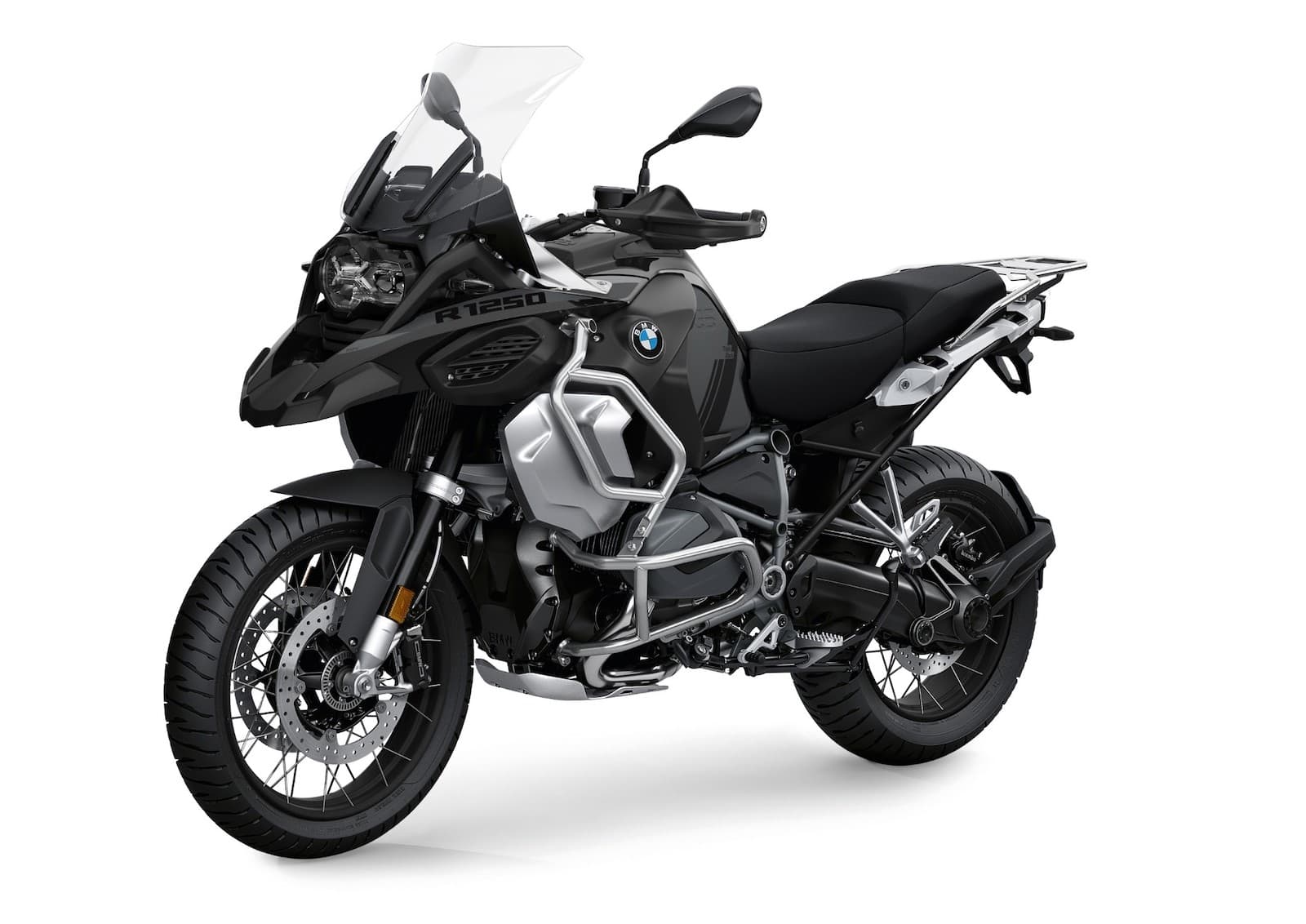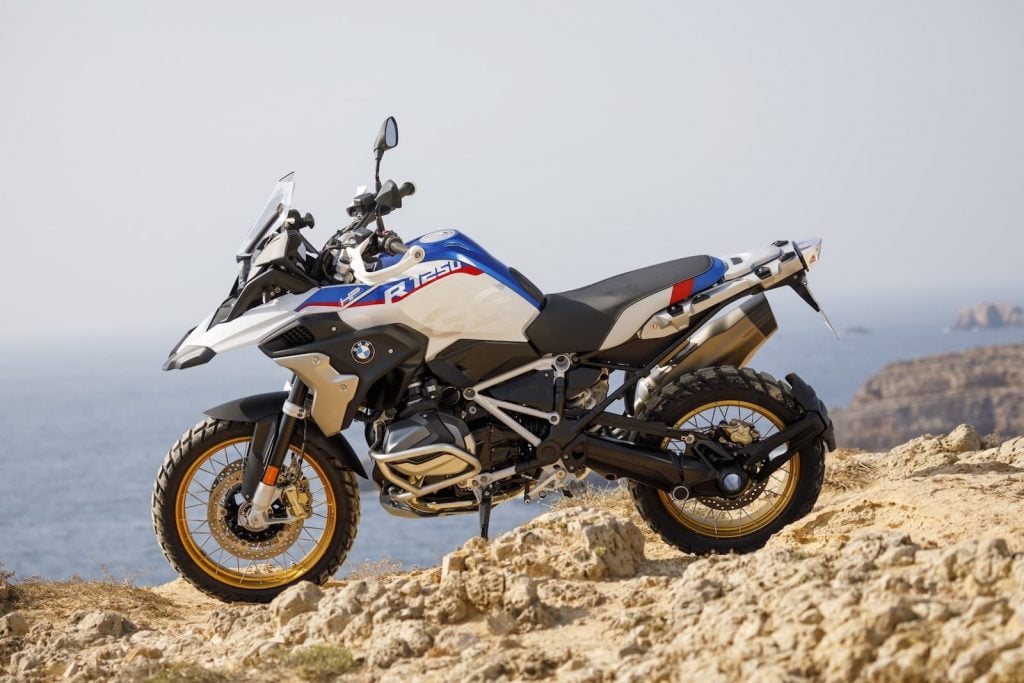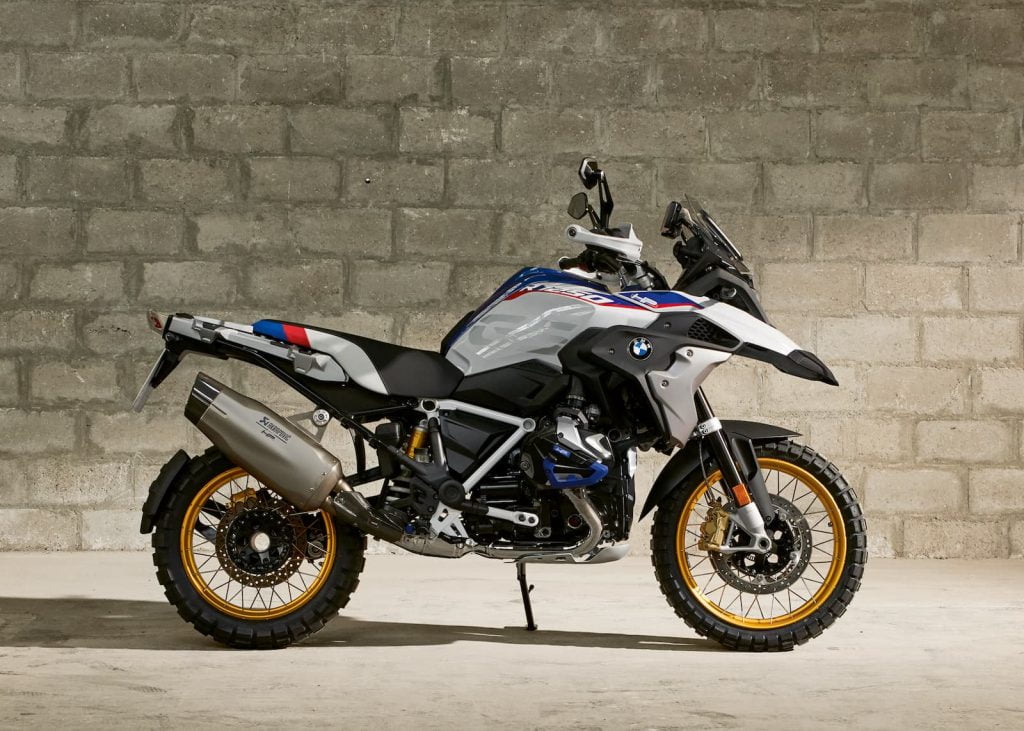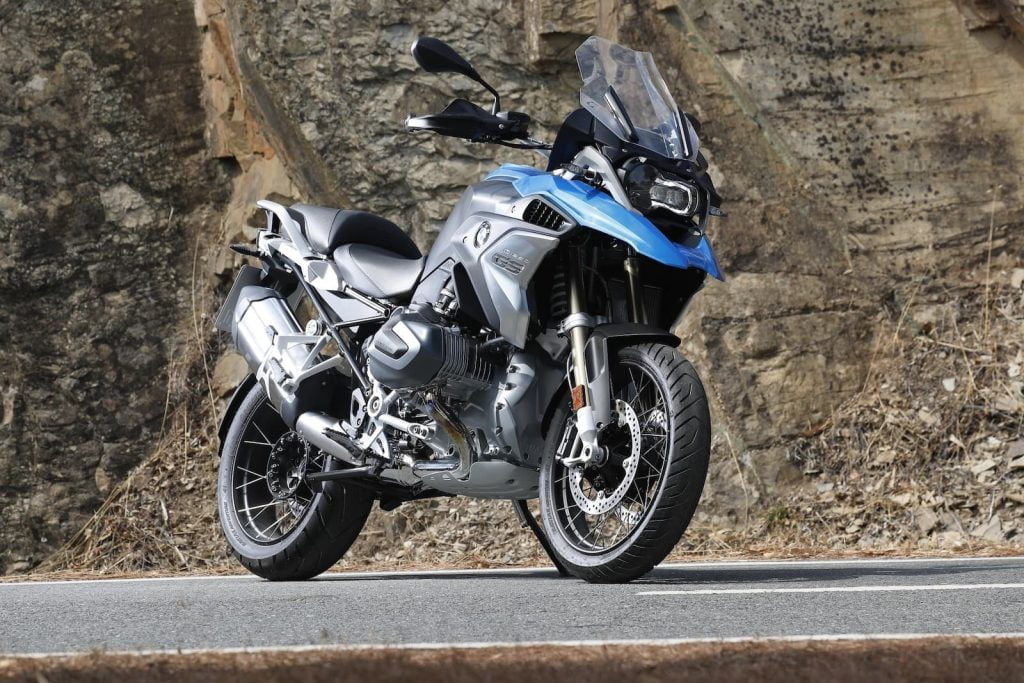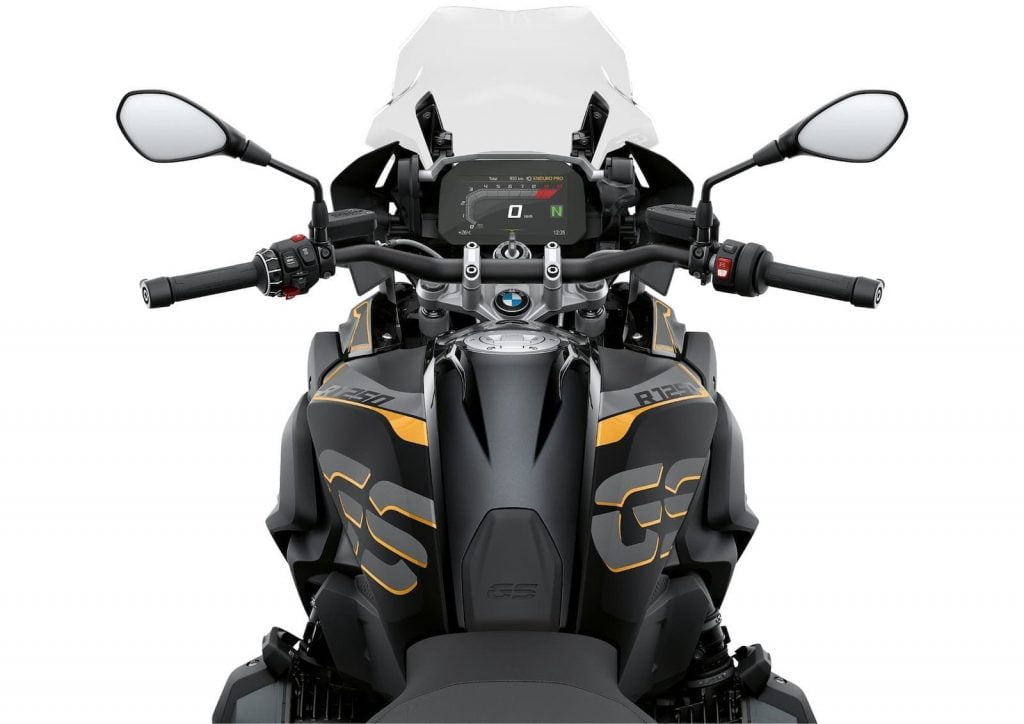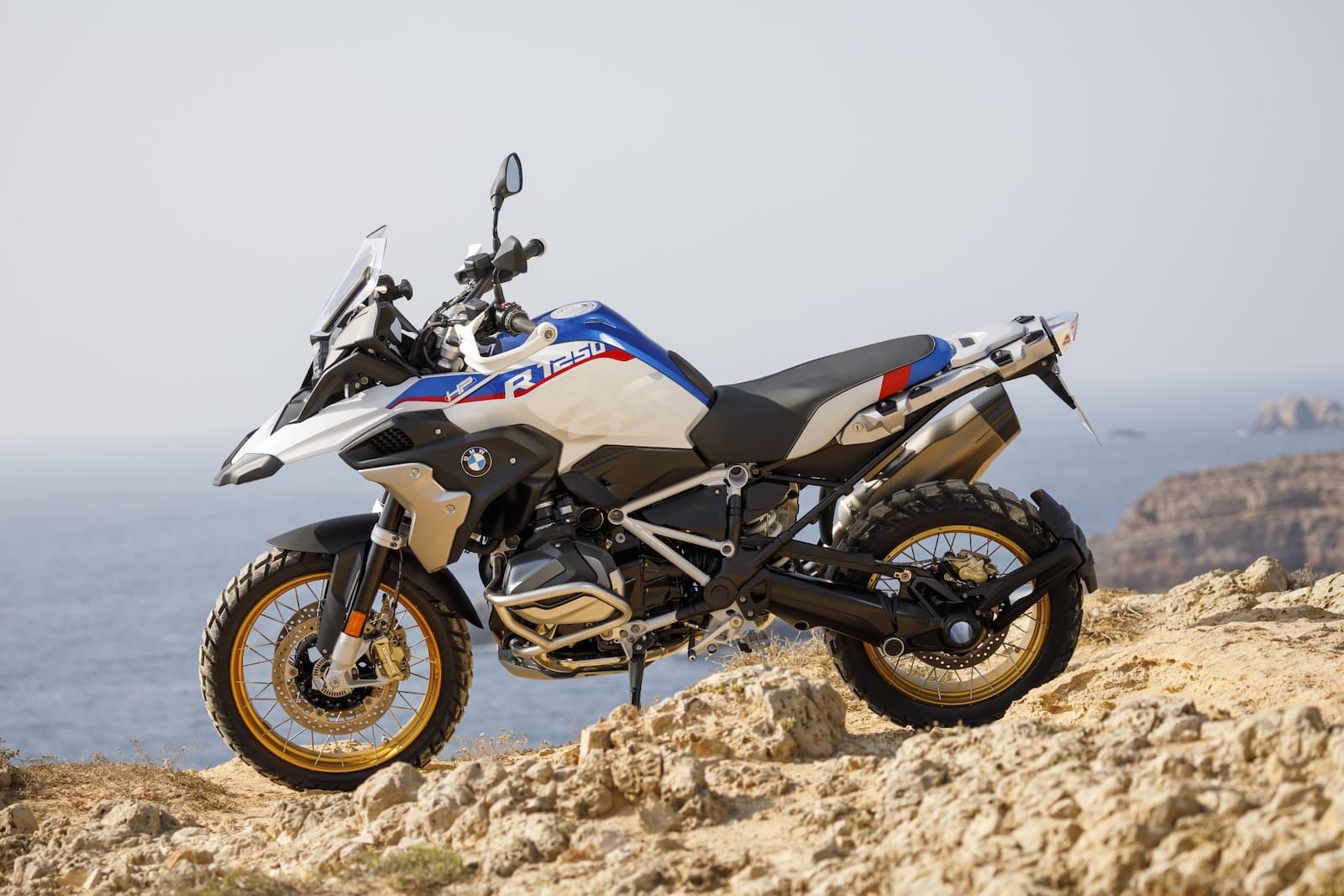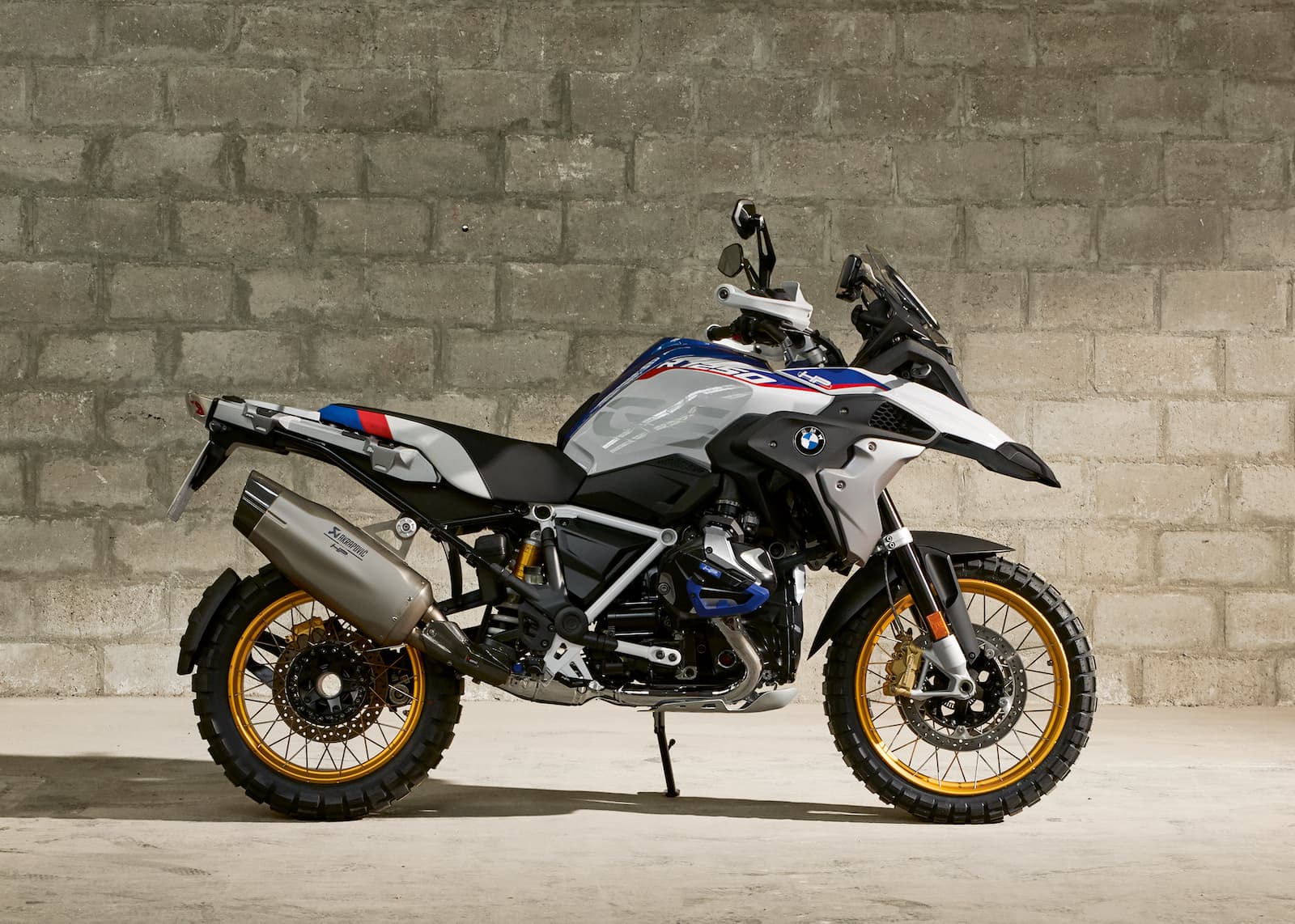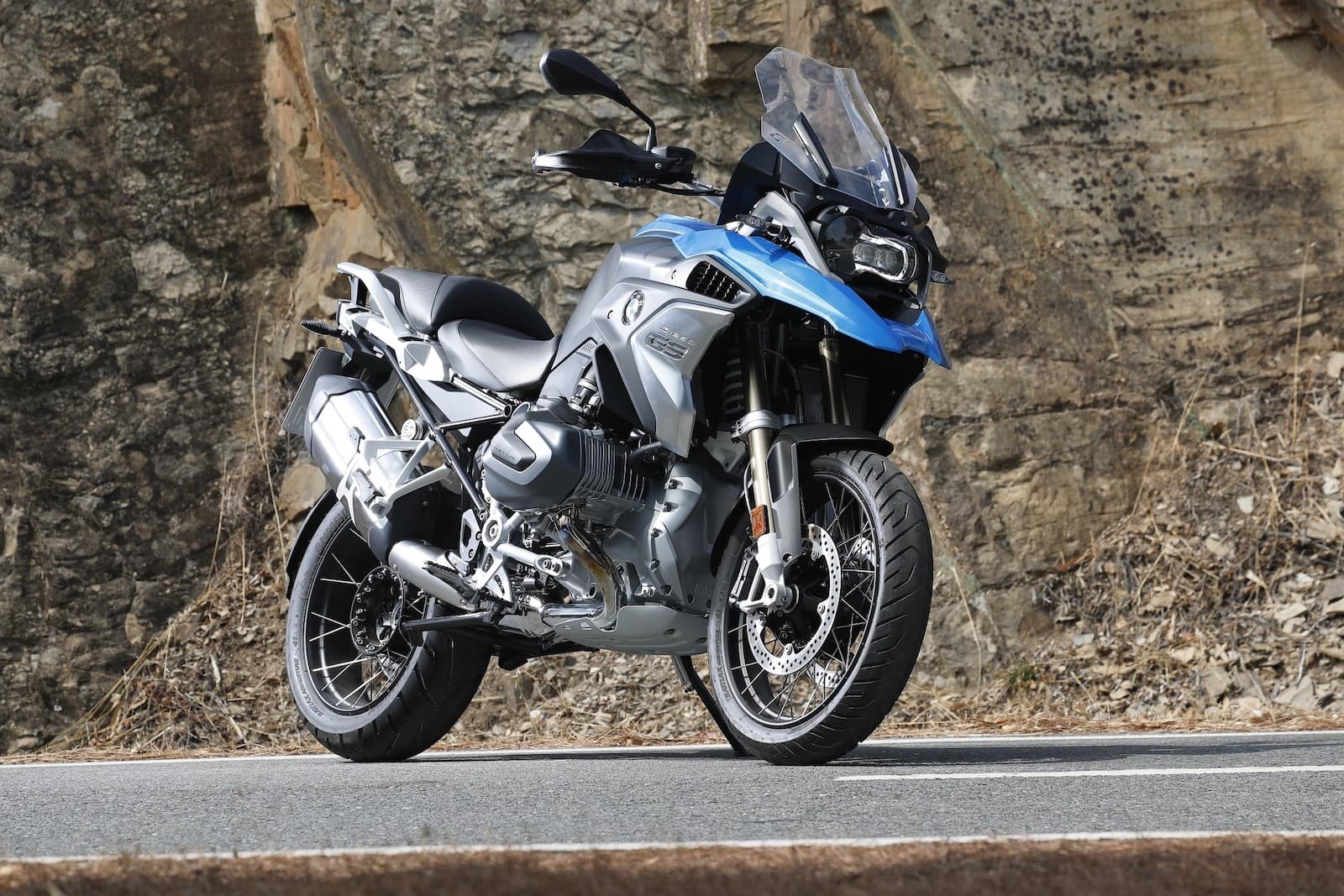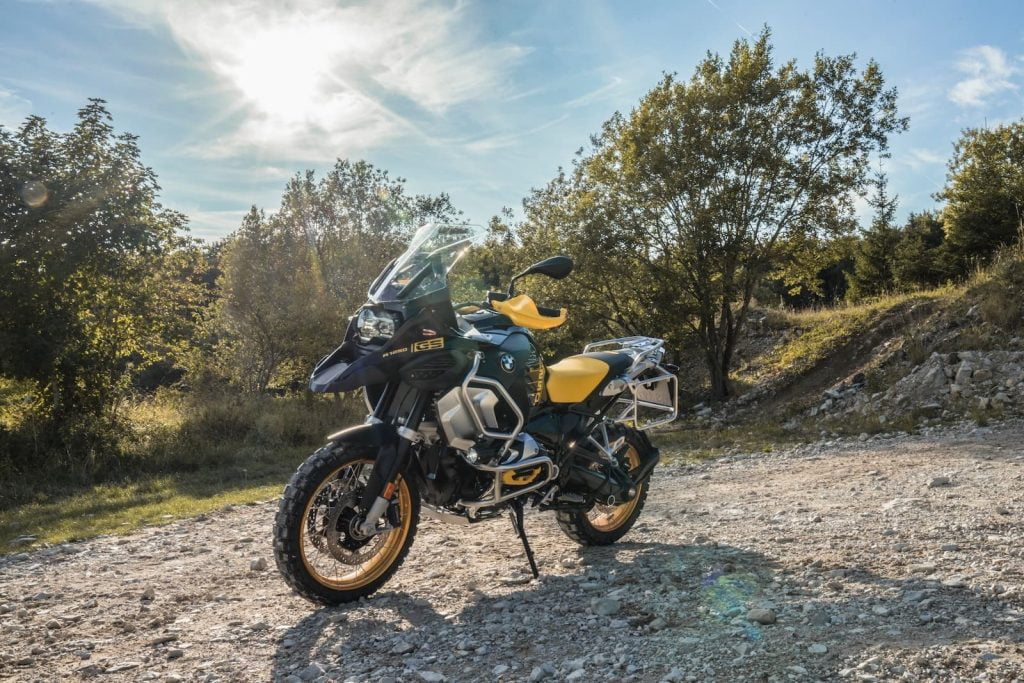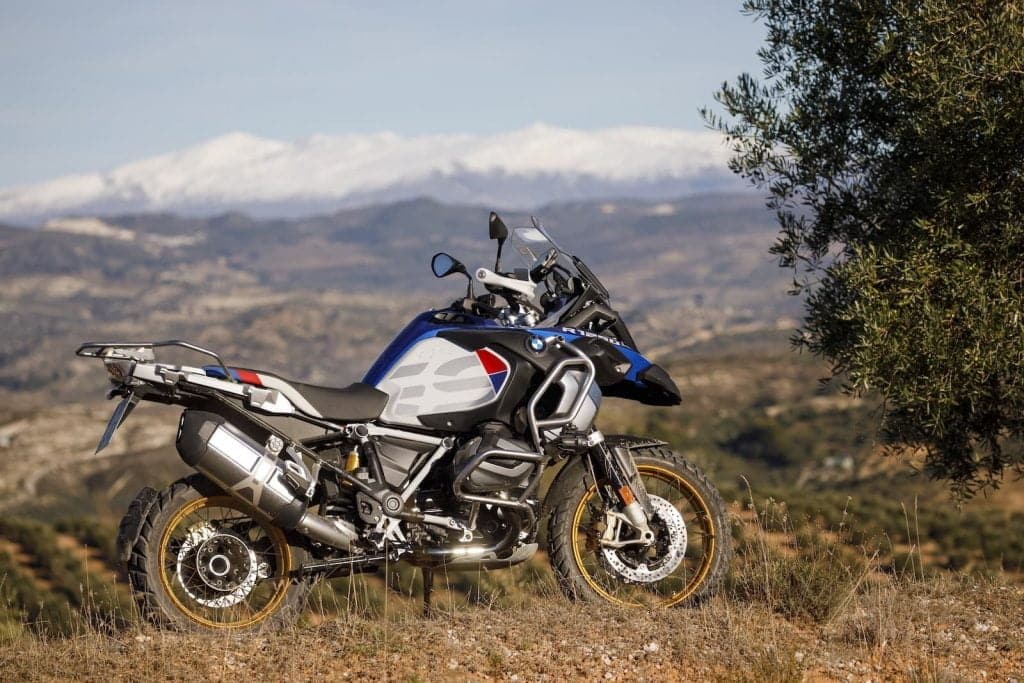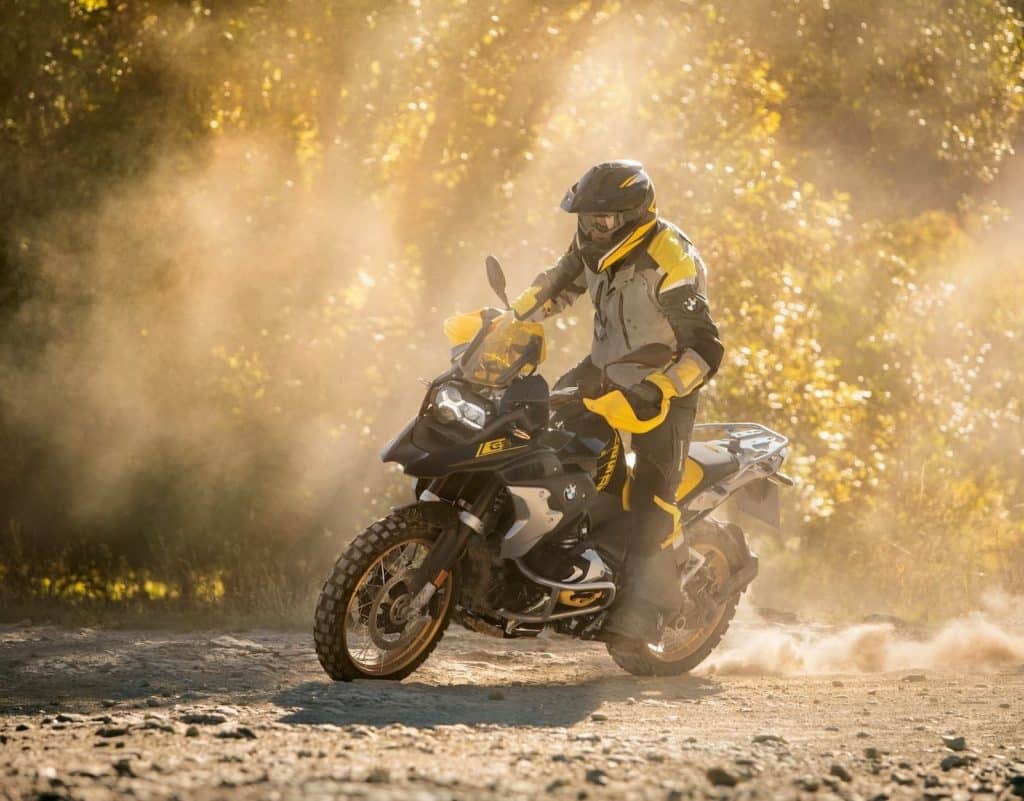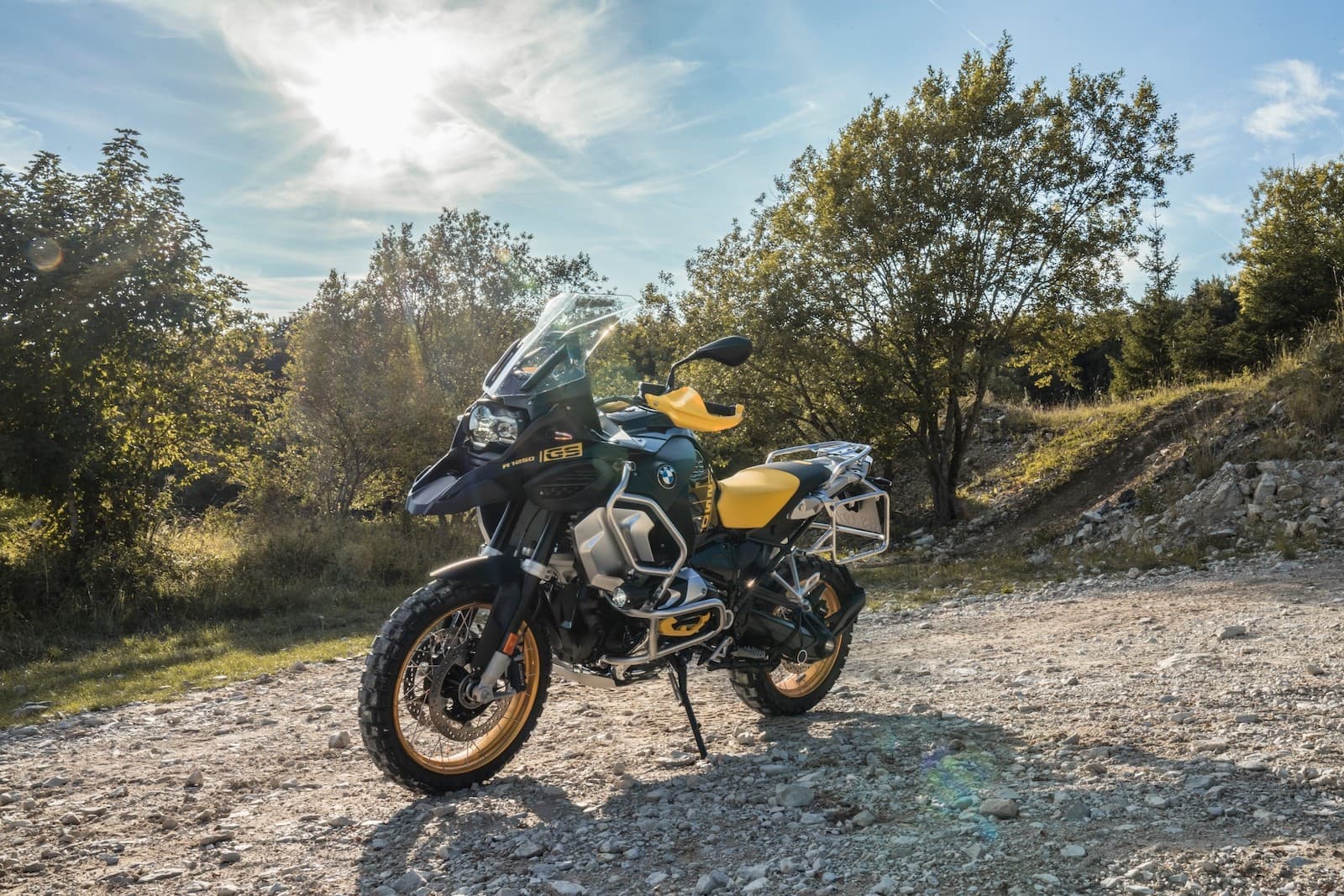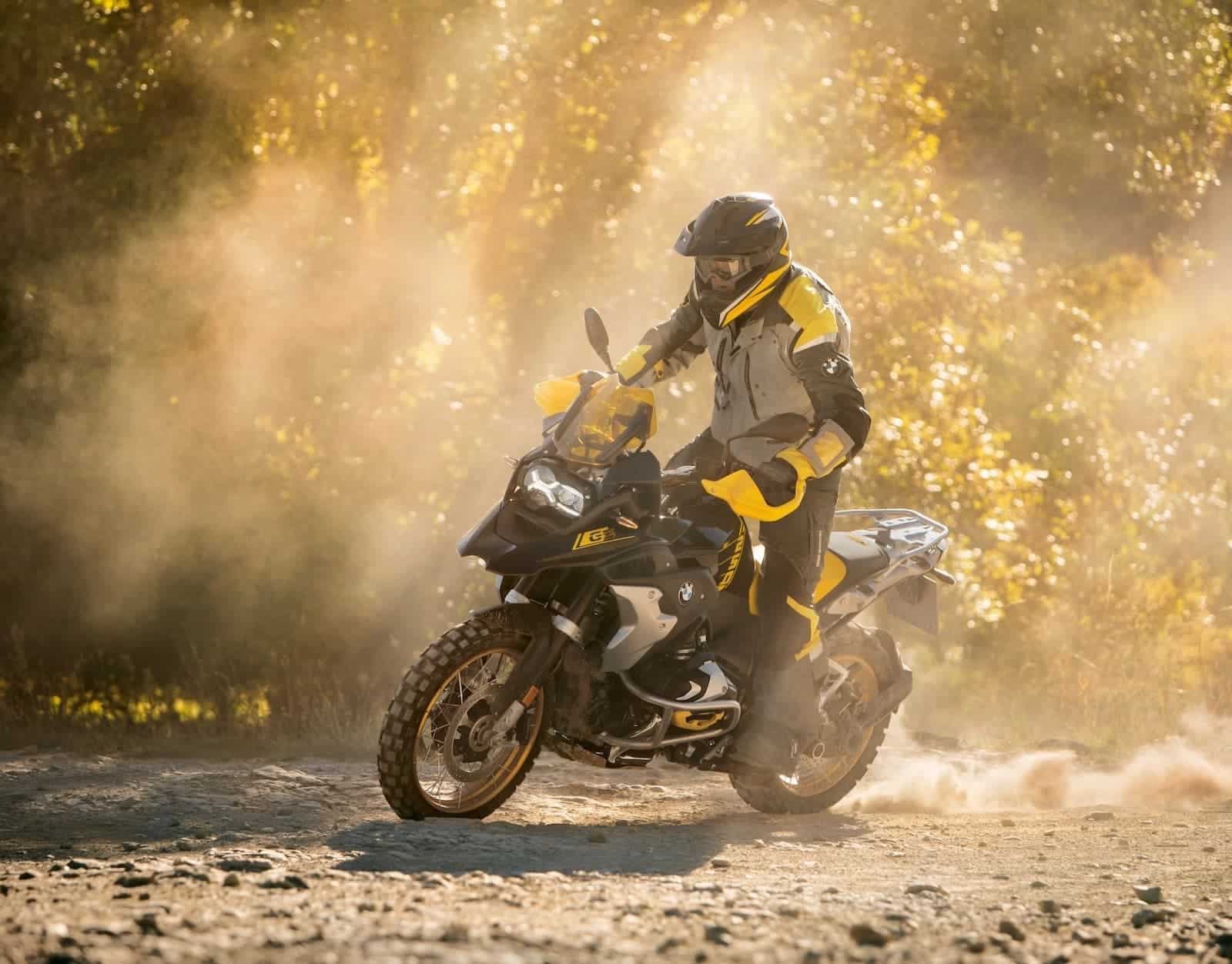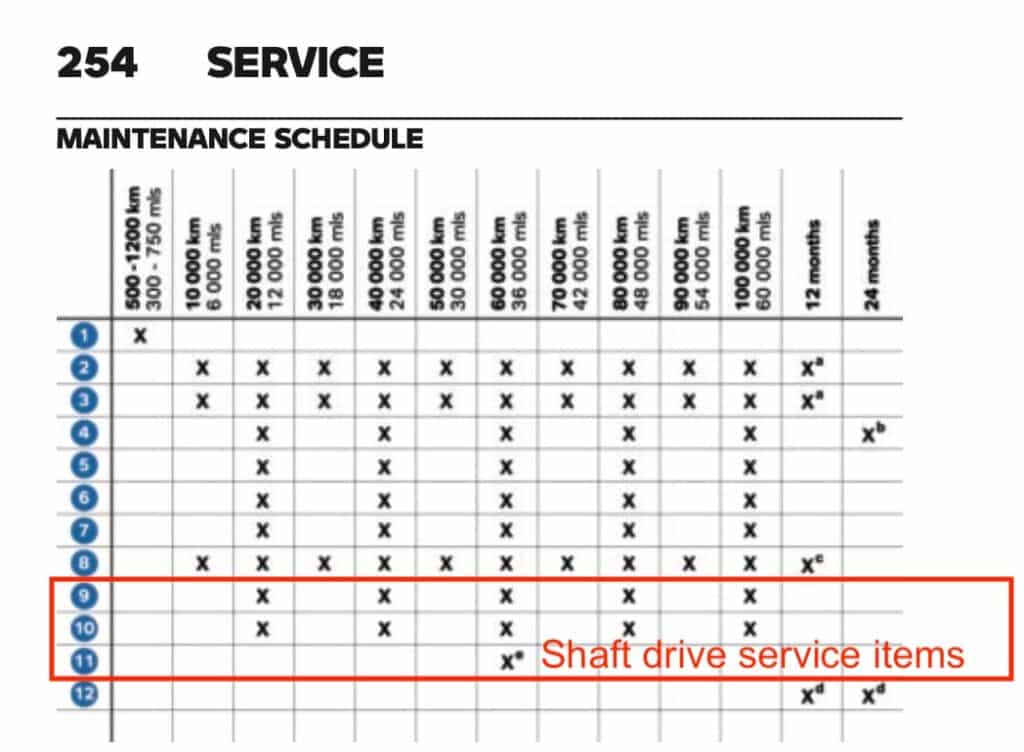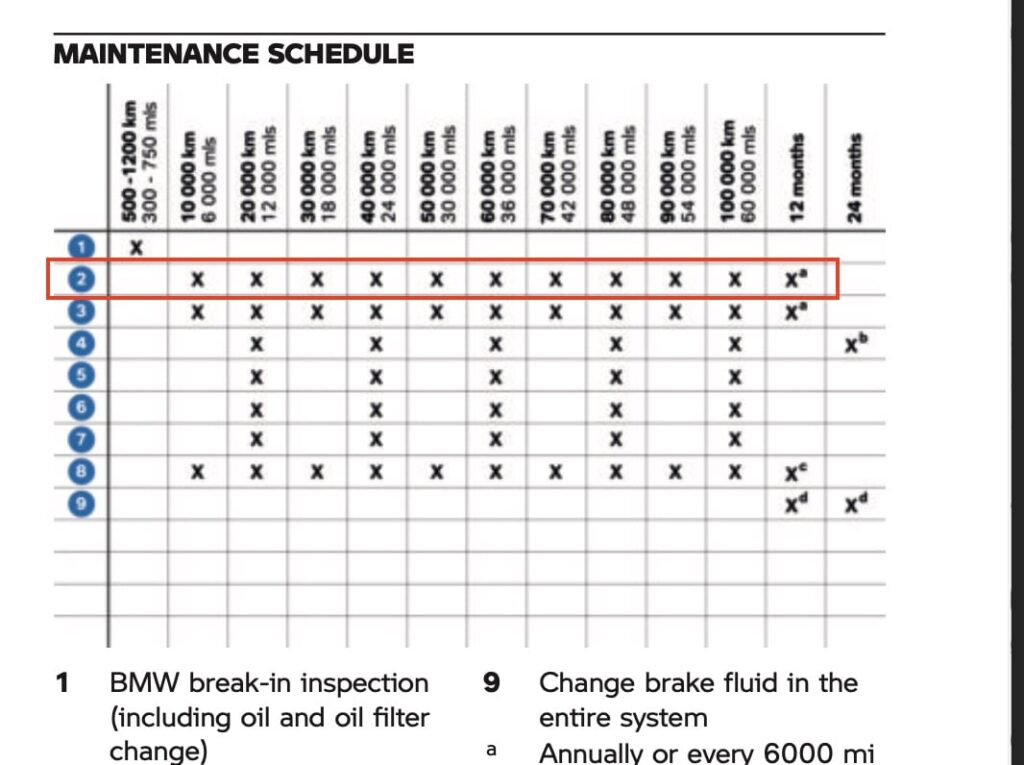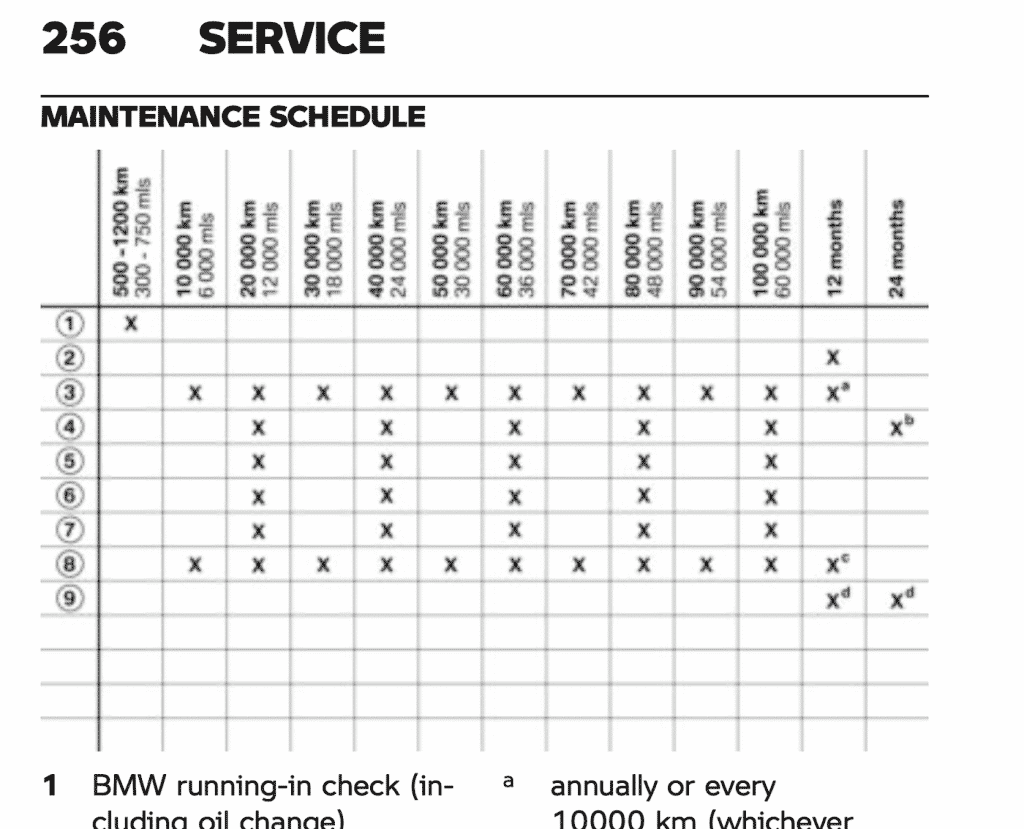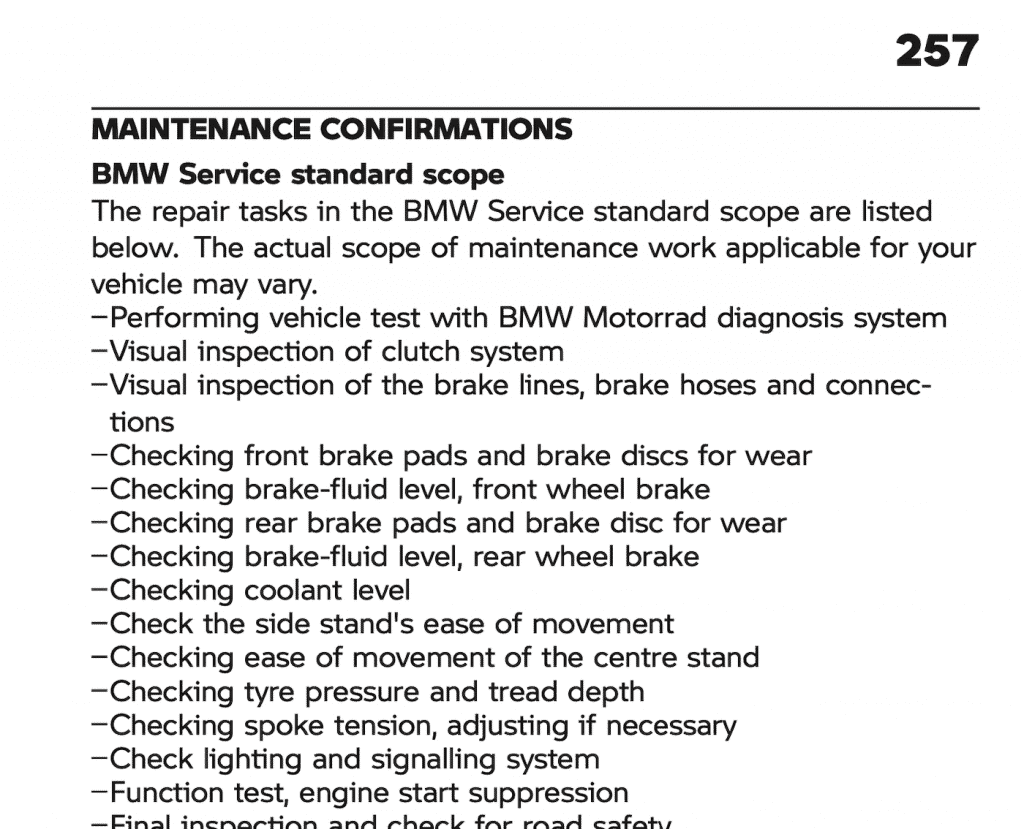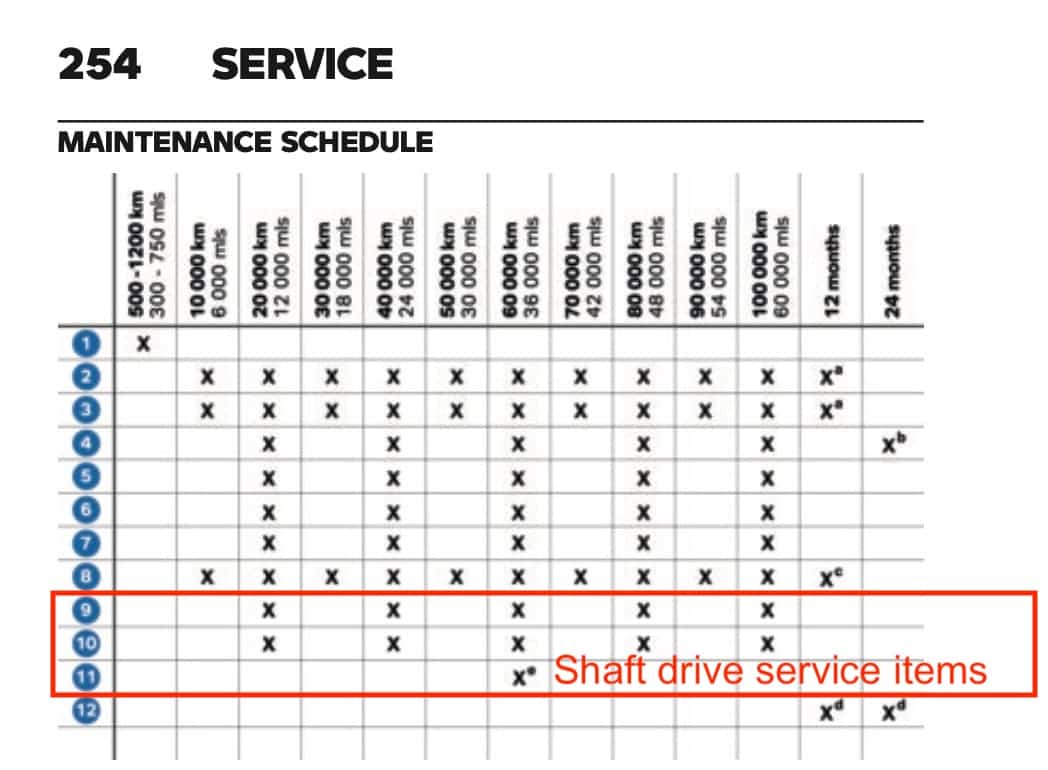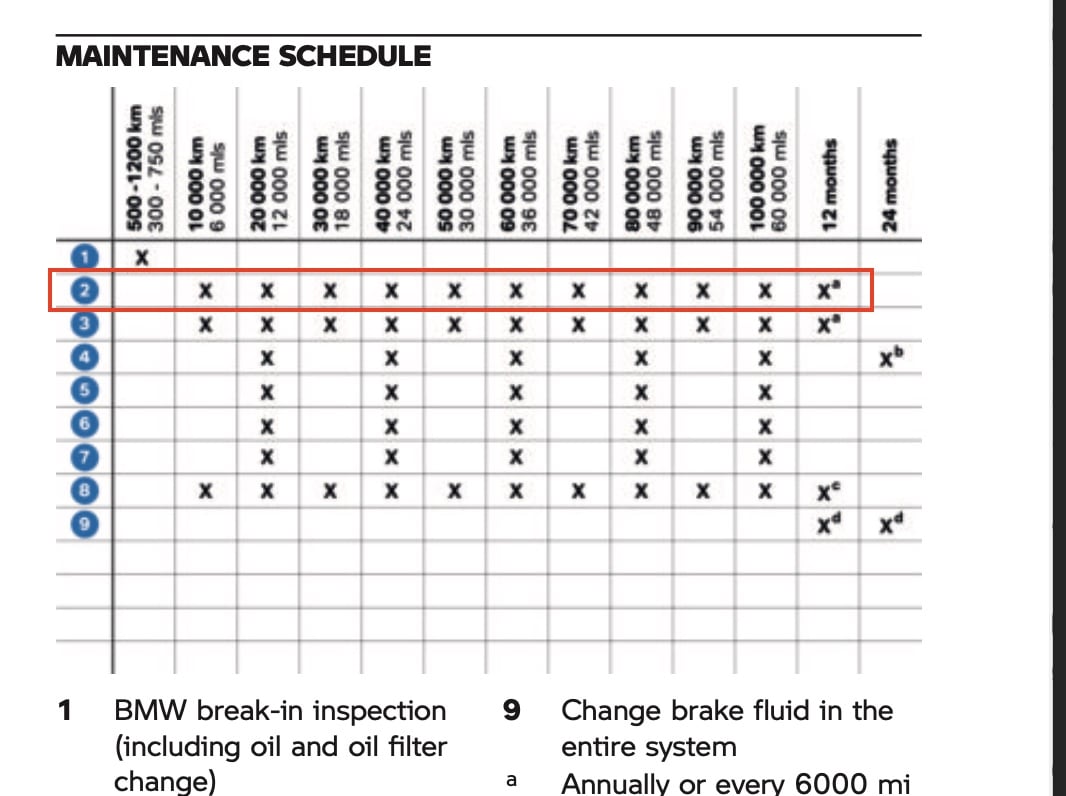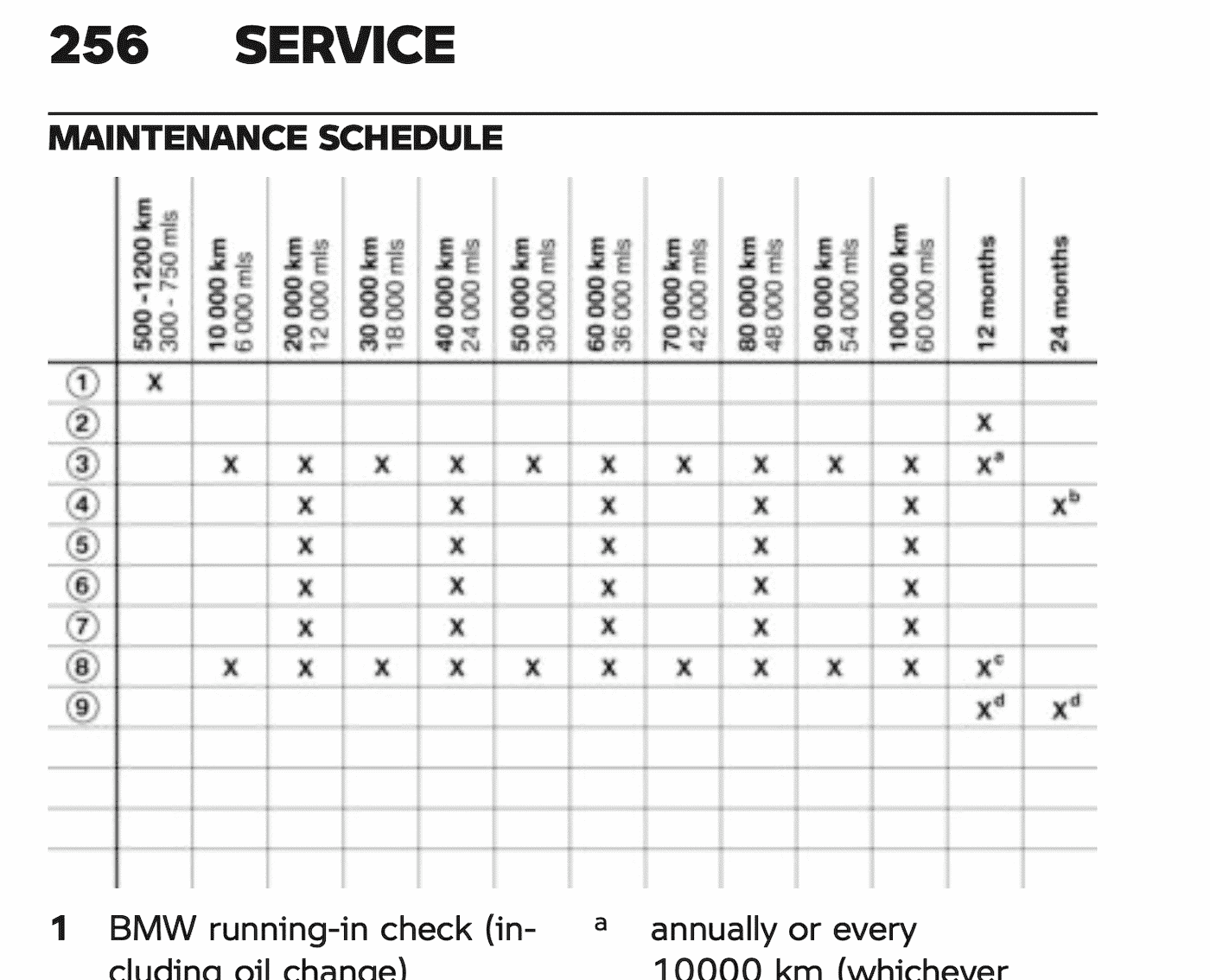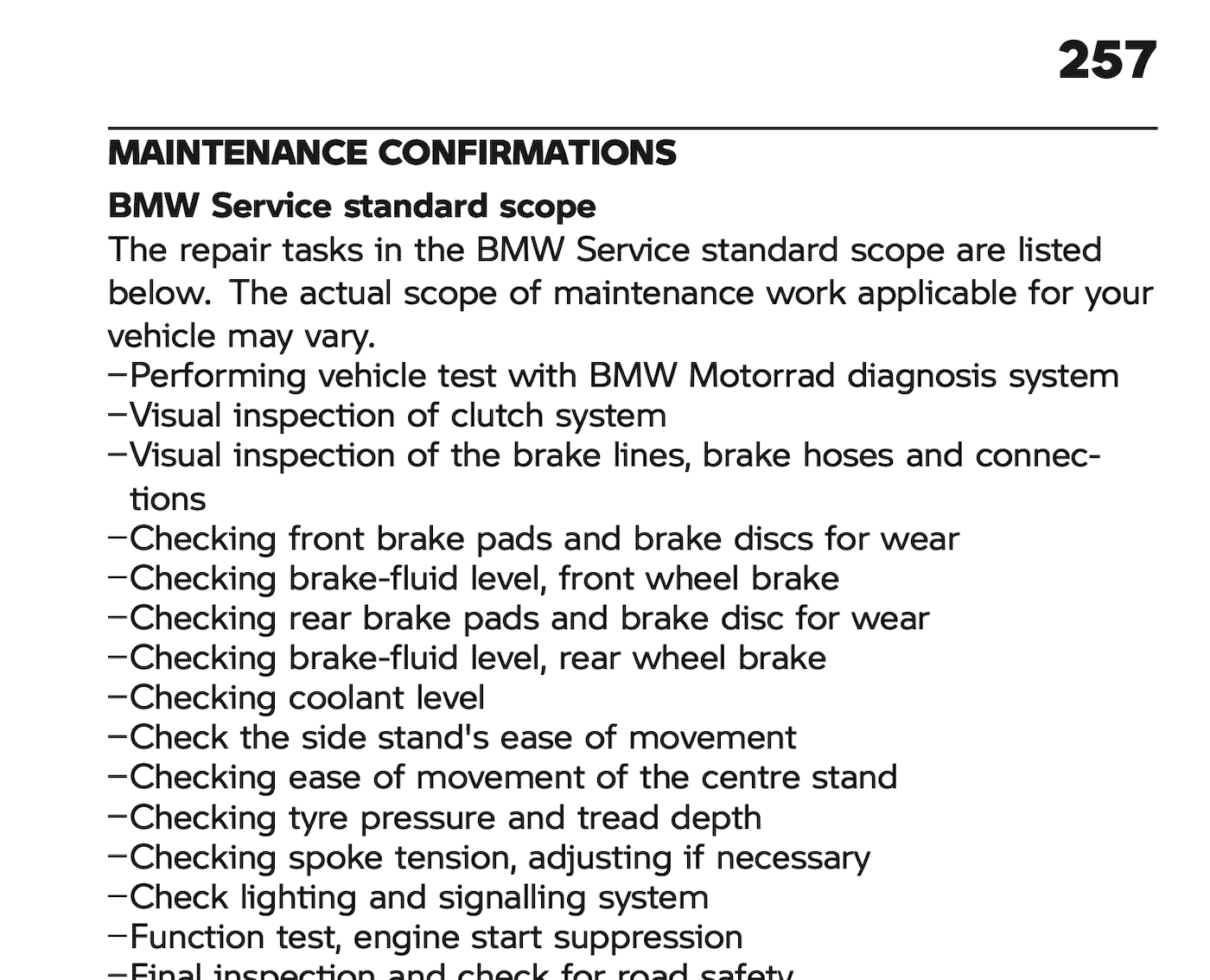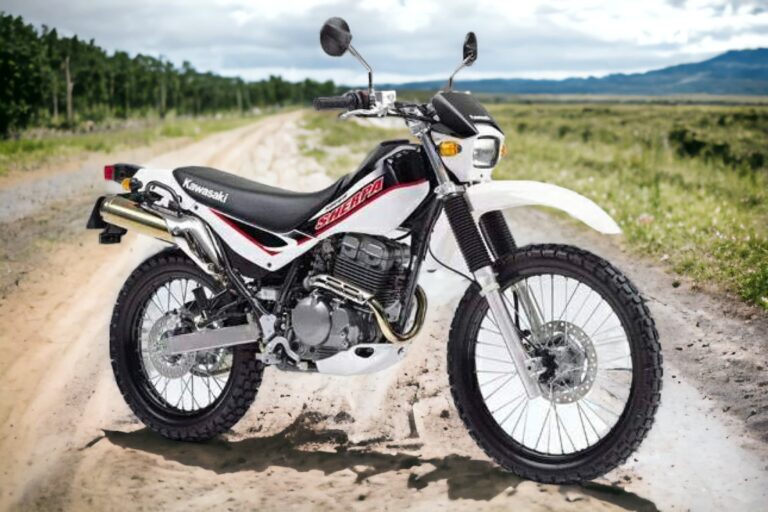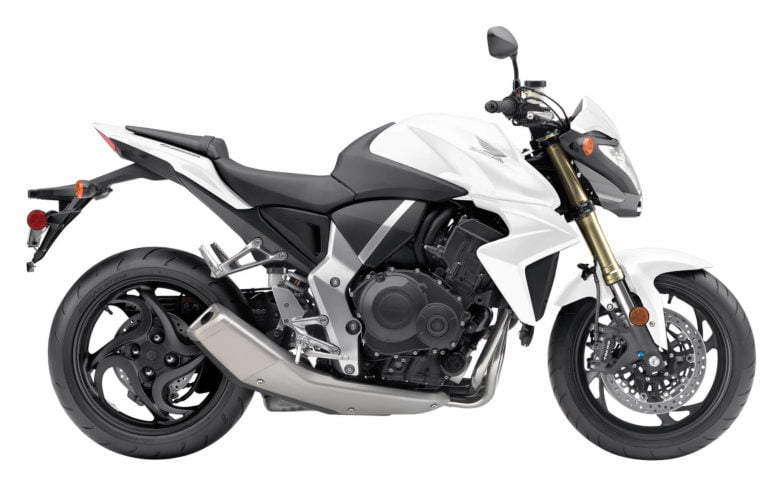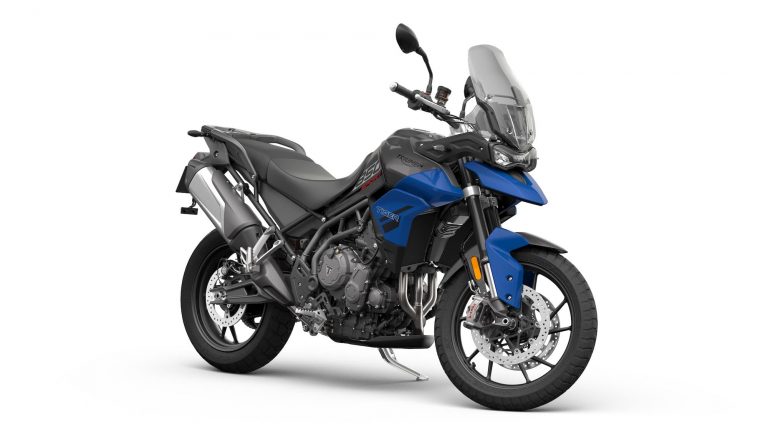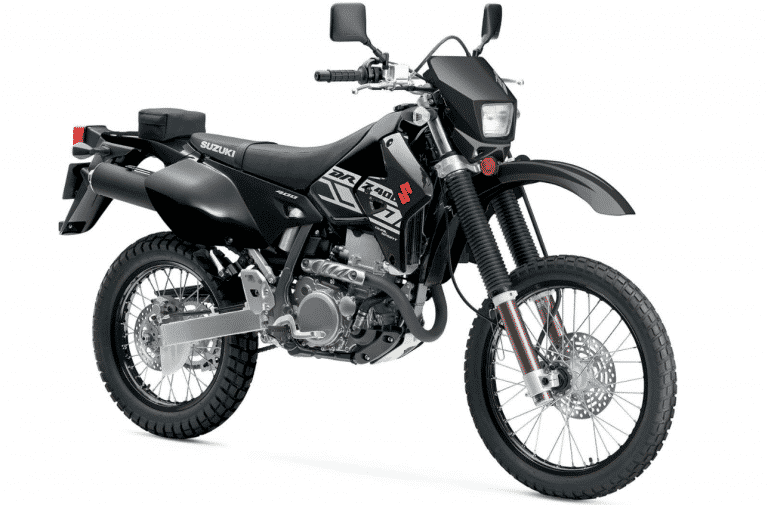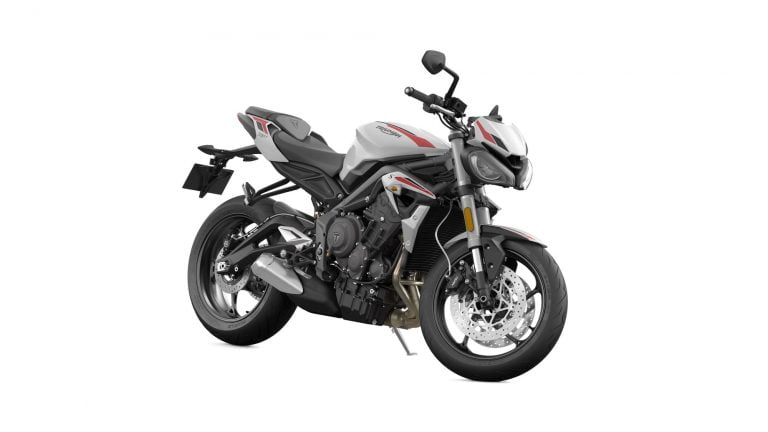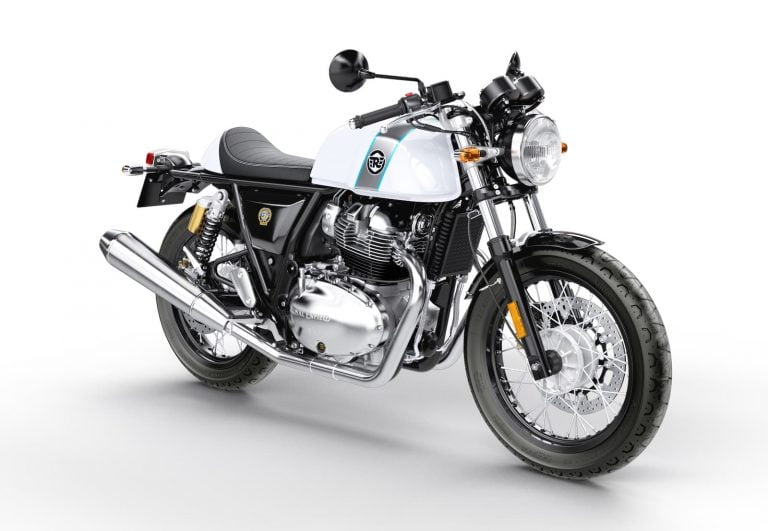BMW R 1250 GS & GS Adventure “ShiftCam” (2019+) Maintenance Schedule and Service Intervals
This is the maintenance schedule and service intervals for the BMW R 1250 GS, released in late 2018 for the 2019 model year. People sometimes call it the R1250GS, condensing all the letters, but BMW likes to space it out.
This also includes the maintenance schedule for the BMW R 1250 GS Adventure (the “GSA”) with the same ShiftCam engine, which was released for the 2020 model year (the GSAs tend to lag by a year).
Both bikes replaced the earlier DOHC liquid-cooled models of R 1200 GS that were available between 2013 (the first GS) and 2019 (the last GSA).
Here are all the big BMW GS models for which we have maintenance schedules
- BMW R 1100 GS (1994-1998)
- BMW R 1150 GS / Adventure (1999-2005)
- BMW R 1200 GS / Adventure, Hexhead (2004-2009)
- BMW R 1200 GS / Adventure, Camhead (2010-2014)
- BMW R 1200 GS / Adventure, Liquid-cooled (a.k.a. Wethead) (2013-2018)
- BMW R 1250 GS / Adventure, “ShiftCam” (2019+)
- BMW R 1300 GS (2024+)
The BMW R 1250 GS was the first big GS to have a bigger motor in nearly two decades. Still a DOHC liquid-cooled boxer twin, the BMW G 1250 GS’ “ShiftCam” motor has 1254 cc (previously 1170 cc) capacity, and puts out a peak of 100 kW (136 hp) @ 7750 rpm and peak torque 143 Nm (105 ft-lb) at 6250 rpm, both of which specs are a rough ~10% increase over the outgoing model.
The 1250 motor is used in other BMW motorcycles of similar vintage, like the BMW R 1250 R.
From MY2024, BMW released the BMW R 1300 GS, with a host of upgrades aside from the motor.
Updated for 2024: BMW updated the maintenance schedule for the BMW R 1250 RS, adding in requirements to service the universal shaft. These are included below. Because the motorcycle hasn’t fundamentally changed, it makes sense to also conduct this service on the earlier models of BMW R 1250 GS
This site has links for things like oil and spark plugs from which we earn a commission (which unfortunately nobody can save, not even us). If you appreciate this work, then please use those links. Thanks!
BMW R 1250 GS Service Intervals
Overall, the BMW R 1250 GS has service intervals of every 6000 miles / 10000 km or every year, at which point BMW recommends you change the oil and oil filter, plus do a number of other checks for leaks, tightness, and adequate lubrication (the standard service).
Every two services, do a major service, including a valve clearance inspection, changing the oil in the rear bevel gears, the air filter and the spark plugs.
There are some items that are time-based rather than distance-based, like replacing rear bevel oil and brake fluid. See more detail in the maintenance schedule below.
From the July 2023 onward version of the manual for the BMW R 1250 GS, BMW recommends servicing the shaft drive, even replacing it at specified intervals. These changes are reflected below.
What you need to service your BMW R 1250 GS
Servicing the “ShiftCam” BMW R 1250 GS requires many of the same parts as the earlier liquid-cooled R 1200 GS, though some have changed (e.g. spark plugs, front brake pads, and even the recommended gear oil).
So here’s what you need to service your big adventure bike.
| Part | BMW R 1250 GS and GS Adventure spec |
|---|---|
| Engine oil | The manual calls for “SAE 5W-40, API SL / JASO MA2” without additives, preferably BMW Motorrad oils e.g. BMW Motorrad Advantec Ultimate 5W-40. A well-respected alternative is Castrol Power RS 5W-40. |
| Oil filter | BMW part number for the oil filter is 11427721779. The HF160RC is a drop-in replacement from Hiflofiltro. |
| Rear drive oil | Use a high-quality API GL-5 synthetic 70W-80 hypoid gear oil, though many BMW mechanics use 70W-90. A high quality choice is Castrol 75W-90 synthetic. |
| Spark plug | Standard spark plug is an NGK LMAR8AI-10 per the manual for the 1250 motor. |
| Air filter | BMW part number for the air filter is 13727726799. The K&N BM-1113 is an aftermarket alternative. |
| Coolant | The manual doesn’t mention what type, but get long-life BMW coolant from a dealer or online. |
| General lubricant | Use lithium soap-based grease to regularly lube external pivot points. |
| Brake fluid | Specified fluid must be DOT 4, e.g. Castrol DOT 4 or BMW DOT 4 fluid. BMW part number for the brake fluid is 83132445461. |
| Brake pads (front) | Part number for front brake pads is 34118405104 (you need two pairs). An EBC alternative is FA724HH (double sintered, long-life). |
| Brake pads (rear) | Part number for rear brake pads is 34218562163. An EBC alternative is FA209/2HH (double sintered, long-life pads). |
Maintenance Schedule for the BMW R 1250 GS and R 1250 GS Adventure
Below is the maintenance schedule for the BMW R 1250 GS and R 1250 GS Adventure.
This maintenance schedule is presented in a simplified format from the manual, as it’s repetitive. The maintenance is consolidated into one table below.
Things to note:
- There’s no alternator belt to change (unlike many earlier models)
- You change the rear bevel gear oil every 20 000 km/2 years, more frequently than on past models
- Valve service intervals are 20 000 km, wider than earlier air/oil-cooled models
One interesting thing is that BMW doesn’t mention changing the coolant, just checking it. BMW uses a “permanent” (OAT or HOAT) antifreeze that isn’t meant to be changed. Various dealers/mechanics still say you can change it every 3-4 years, though. Especially if you notice the level declining.
Notes on the schedule
- The running-in check is omitted (Dealers usually do this)
- Past the end of the maintenance schedule, keep following it in the pattern shown.
- The maintenance schedule for many items follows a “per x years” or “x distance” schedule. Follow whichever comes first.
| miles x 1000 | 6 | 12 | 18 | 24 | 30 | 36 | |
|---|---|---|---|---|---|---|---|
| km x 1000 | 10 | 20 | 30 | 40 | 50 | 60 | Every |
| Conduct standard BMW annual service (see below) | ✓ | ✓ | ✓ | ✓ | ✓ | ✓ | Year |
| Change engine oil and filter (BMW Motorrad Advantec Ultimate 5W-40, HF160RC) | ✓ | ✓ | ✓ | ✓ | ✓ | ✓ | Year |
| Change oil in rear bevel gears | ✓ | ✓ | ✓ | 2 years | |||
| Check valve clearances | ✓ | ✓ | ✓ | ||||
| Replace all spark plugs (LMAR8AI-10) | ✓ | ✓ | ✓ | ||||
| Replace air filter element (BM-1113) * Off-road use: Check / replace as necessary | * | ✓ | * | ✓ | * | ✓ | Year, if used off-road |
| Change brake fluid, entire system (BMW DOT 4) | After 1 year, then every 2 years | ||||||
| Check the universal shaft (Recommended) | ✓ | ✓ | ✓ | ||||
| Lubricate the universal shaft (Recommended) | ✓ | ✓ | ✓ | ||||
| Replace the universal shaft | ✓ |
Notes on maintaining the service shaft: These items were added in the July 2023 version of the manual for the R 1250 GS. The check and lubricate items are marked as “recommended”, and the replacement is marked as “relative to the service life of the component”.
Standard BMW service for the R 1250 GS / Adventure
The “standard service” to be done according to the schedule above is below.
Items marked [D] are for dealers / mechanic shops and need special tools or equipment.
| Standard BMW annual service (1250 motor) |
|---|
| [D] Perform visual test with BMW Motorrad diagnosis system |
| Visually inspect clutch system, checking for friction point |
| Visually inspect brake lines, brake hoses, and connections |
| Check front brake pads and brake discs for wear Minimum thickness: 1.0mm |
| Check brake fluid level, front wheel brake Brake fluid must be above MIN mark. Note: level can drop with pad wear. |
| Check rear brake pads and brake disc for wear Minimum thickness: 1.0mm |
| Check brake fluid level, rear wheel brake Brake fluid must be above MIN mark. Note: level can drop with pad wear. |
| Check coolant level |
| Check side stand’s ease of movement |
| Check centre stand’s ease of movement |
| Check tyre pressure and tread depth |
| Check spoke tension (if spoked wheels fitted), adjusting if necessary |
| Check lighting and signalling system |
| Function test, engine start suppression |
| Final inspection and check for road safety |
| Checking battery state of charge |
| [D] Setting service-due date and countdown distance with BMW Motorrad diagnosis system |
| [D] Confirming BMW service in on-board literature |
BMW R 1250 GS tire pressure recommendations
Use the following recommended tire pressures for the BMW R 1250 GS / Adventure to optimise for performance and tire longevity.
The below applies to whether you have cast wheels, or cross-spoked wheels.
| Wheel | Wheel size | Tire size | Tire pressure (cold) |
|---|---|---|---|
| Front | 3.00 x 19 inch | 120/70 R 19 | 2.5 bar / 36 psi |
| Rear | 4.50 x 17 inch | 170/60 R 17 | 2.9 bar / 42 psi |
The above recommendation is for a bike with no load (no luggage), and for general sport / road riding.
You should adjust it depending on your load, tires, and where you’re riding.
Maintenance Torque Values
Below are the maintenance torque values for the R 1250 GS / GSA.
| Item | Nm | lb-ft |
|---|---|---|
| Engine oil drain bolt | 42 | 31 |
| Oil filter (lubricate sealing ring with oil) | 11 | 8 |
| Spark plugs | 12 | 9 |
| Front wheel axle bolt | 30 | 22 |
| Front brake disc to front wheel (tighten diagonally opposite, use thread locker) | 19 | 14 |
| Front brake caliper to fork brackets | 38 | 28 |
| Fork lower pinch bolts to sliding tube | 19 | 14 |
| Speed sensor | 8 | 6 |
| Rear wheel bolts | 60 | 44 |
| Rear brake caliper to bevel gears | 24 | 18 |
About the BMW R 1250 GS and R 1250 GS Adventure
The BMW R – GS line has been the staple of the adventure motorcycle world since the first one in 2004 (taking over from the BMW R 1150 GS). And the BMW R 1250 GS is the latest in that line.
The BMW R 1250 GS is the motorcycle of the day (the 2020s) — or at least one of them, in an increasingly wide range of adventure touring / adventure sports motorcycles, a range in which BMW also has a few entrants.
But the BMW R 1250 GS is the most recognisable of adventure motorcycles — with some passionate competition from the latest Ducati Multistrada V4 and the KTM 1290 Super Adventure R.
For many years, BMW kept the displacement the same at 1170 cc with the 1200 generations of R 1200 motorcycles. The engine in the R 1200 GS (and RT, and RS etc.) evolved since 2004, finally becoming a “partly liquid-cooled” engine in the most recent R 1200 GS.
But a few things — consumer demand, evolving technology, and changing emissions requirements — needed a new engine from BMW, and the new 1250 range is it.
The flat-twin boxer-driven GS motorcycles have been one of the top choices for adventurers for more than 35 years. This latest incarnation of the boxer twin adds “ShiftCam” technology — variable valve timing so that the motor’s torque delivery is optimised over an even wider range.
The ShiftCam technology allows the engine to vary valve timing and valve stroke on the intake side. Additionally, BMW designed the intake camshafts so that they can open the intake valves asynchronously, for “enhanced swirl” of fuel/air mixture.
The camshaft is now driven by a toothed chain (previously a roller chain), too.
The new 1254cc engine makes 100 kW (136 hp) @ 7750 rpm and 143 Nm of torque peaking at 6250 RPM, a ~10% increase in both specs. Even though the R-GS bikes aren’t all about top-end power, power is always welcome!
Aside from the engine, there are many other new features in the BMW R 1250 GS. These include
- Standard riding modes, ASC, and hill start control, with optional Ride Modes Pro
- Next-generation Dynamic ESA (Electronic Suspension Adjustment)
- Dynamic Brake Control — helping avoid unintentional accelerator activation while braking
- Standard LED headlamps, with DRLs as optional equipment
- Full-colour TFT screen standard — replacing the gauges of previous models.
The “Premium packages” include many of those options standard.
The BMW R 1250 GS Adventure (often called the GSA) is based on the base R 1250 GS, but with longer suspension travel (8.3-8.7 inches vs 7.5-7.9 front and back) and associated height, standard crash bars, and a 50% larger fuel tank. It also just looks massive!
Reference — Manual for the BMW R 1250 GS
The above maintenance schedule comes directly from the manual for the BMW R 1250 GS, with parts references coming from parts fiches.
In more recent years, BMW slightly updated the R 1250 GS’ maintenance schedule, changing the annual inspection to one that should also be done on a distance interval.
You can download BMW’s manuals for their motorcycles here.
